
















14 18 21 22 26 33 34 38 39 40 42
EDITION 174 TABLE OF CONTENTS
Publisher Flyer and Aviation Publications cc
Managing Editor Guy Leitch guy@flightcommag.com
Advertising Sales Wayne Wilson wayne@saflyermag.co.za
Layout & Design Patrick Tillman: Imagenuity cc
JULY 2023
ADMIN:
+27 (0)83 607 2335
TRAFFIC:
+27 (0)81 039 0595
ACCOUNTS:
+27 (0)15 793 0708
Bush Pilot - Hugh Pryor
AME Directory
IATA - Yvonne Manzi Makolo Chairs IATA Board
Pilots - Laura McDermid
John Bassi - Thought I knew how to fly
IATA - Willie Walsh Berates Politicians
Defence - Darren Olivier
Zambian Children’s Flight
IATA - Urges better Accident Reports
Jeffrey Kempson - A shaky start
Alpi Aviation SA: Flight School Directory
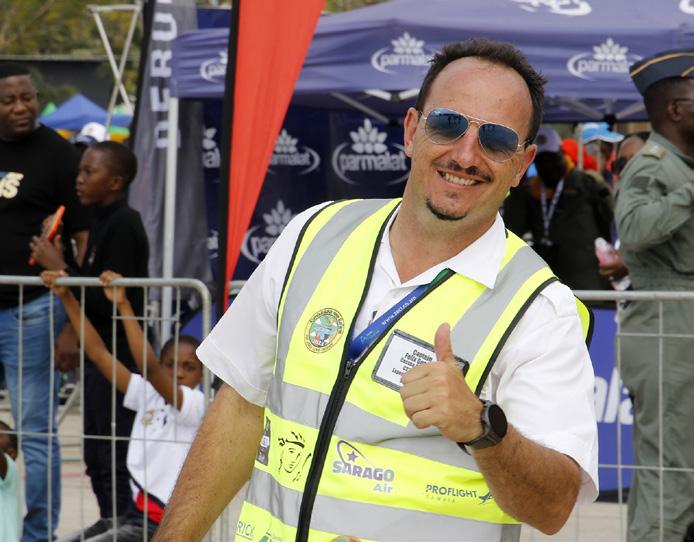

Merchant West Charter Directory
Skysource AMO Listing
Backpage Directory
IN JUNE, AIRCRAFT LEASING company
Avolon, published its World Fleet Forecast, headed ‘Return to Growth’. This projects trends in the commercial passenger aviation fleet out to 2042.
Key findings are that Asia will lead growth driven by travel demand from a rising middle class. And longterm demand to travel to see friends, family and do business is now undiminished byt he Covid pandemic. Good news for pilot demand is that Avolon forecasts the global airline fleet will almost double by 2042, growing 94% to 46,880 aircraft, underpinned by sustained growth in demand for air travel, building on the rapid recovery experienced since the pandemic.
Passenger demand will continue to rise by around 3.5% per annum from a 2019 base, but the pace of expansion will be lower than the 5-6% of the previous 20 years due to reduced potential for further deregulation to drive growth, and higher fares because of aircraft supply shortages and increasing sustainability levies.
decommissioning at the end of their economic life or freighter conversion.
• Growth of the narrowbody fleet (112%) will outpace widebody fleet growth (97%) as single-aisle aircraft are able to accommodate more passengers and transcontinental flight distances. Regional Jet (11%) and Turboprop (36%) growth will be more modest.
• Supply constraints currently being experienced will continue into the second half of the decade, increasing the value of booked production slots and aircraft that have already been delivered. Those airlines that have not secured sufficient capacity will rely on lessors for new and used aircraft.
Avolon estimates that over $4 trillion will be required to finance the 44,300 new passenger commercial aircraft to be delivered over the next 20 years, providing a considerable opportunity for lessors to partner with airlines globally to finance their growth ambitions.
The biggest growth driver will be new middle-class consumers, particularly in India, South-East Asia and Latin America. So Africa is getting left behind again.
Avolon’s World Fleet Forecast key takeaways include:
• The regions showing the biggest increase in travel to 2042 will be India (4.4%), China (3.7%), Asia (5.0%) and Latin America (4.9%). Mature markets such as North America (2.0%) and Europe (3.1%) will continue to grow, although at a more moderate rate.
• 44,300 new aircraft will be delivered over the period and 21,600 aircraft will exit the passenger fleet through
Aircraft lessors will play a key role in accelerating fleet renewal, and a growing industry will attract the capital required to hit aviation’s net zero target by 2050.
Aviation is confronting the challenge of decoupling growth from environmental impact. Trillions of dollars of new investment will be required to fund the required transition to new-technology lower emissions aircraft, to ramp up the supply of sustainable aviation fuel, and to explore new designs that pioneer alternative energy sources.
The outlook for the global airline industry remains very positive – and that’s great news for pilots, cabin crew and the rest of the industry.
HORST AND I SET OFF before sun-up the next morning to once again try and find Pol.
We had gallons of strong coffee to keep Hypnos from sitting on our eye lids and some substantial sandwiches to feed the worms.
With the main and underwing tanks full, we had a good five and a half hours endurance. In fact closer to six, which I know is not far over the ground in a Porter. The Porter is so slow that it is reputed to be the only aircraft to have suffered a bird strike from the rear, but nevertheless, it was better for this job than a four-by-four. The only limiting factor appeared to be the size of our respective bladders and there were various ways around that problem, particularly armed as we were with the Porter’s peculiar “off-road” abilities.
than him, are already here, which I have tortured and claimed before?.....Nothing!.....Go home!.....Go home to your comforts, your air conditioning and your imported luxuries! I shall be here when you and the whole human race have been swept away in the sand storms of time,”
We got back disconsolate to the hangar in Zella that evening, to find that the momentum had been beaten out of the search by the desolate indifference of the desert. Three of the search aircraft had anyway to go back to work for the living, instead of looking for what many of us assumed must by now be the dead.
We landed just the once during that day, for fuel. The other two times were out in the desert, for “comfort stops” and more cups of coffee! Our spirits sank deeper and deeper as the hours and the endless tracts of scorched desert crept past.
It was as if the very desert itself were saying to us, “Give it up! The guy hasn’t an icicle in hell’s chance out here. What’s one more desiccated little pile of bones anyway, to add to the thousands. Some, much tougher
But Horst and I just gagged at the thought of leaving poor little old Pol to eke out his final sun-bleached hours in terrifying, disabling loneliness. He HAD to be SOME where. A large white Toyota Land Cruiser cannot simply disappear into thin air. It’s just too big to get blown away or buried without trace by the wind. We must have been looking in the wrong place all this time. Neither of us realised how close we had been to finding him on the second day, but the truth of the matter was that the five aircraft had now covered the maximum area that Pol’s fuel could have taken him. So we MUST have missed him. He HAD to be somewhere inside that search circle.
That was the Thursday and that evening Horst and I sat

In Part 1 of this two-part story, Hugh Tells how his engineer Pol got lost in the Libyan desert.

down, the only available members of the “Thursday Evening Society”, to drink to an absent friend.
During our discussions I suddenly realised that the only part of the circle which none of us had visited was the Sirte Prohibited Area. The Americans had just recently reduced Mr. Ghadaffi’s Air Defence Radar sites at Sirte to rubble and so the Prohibited Area would be buzzing, as the authorities rushed to fill and calibrate this breach in Libya’s defensive wall. One of the Twin Otters and ourselves had brushed against the boundary of the area on the second day of the search, but both of us had decided that discretion might keep us from the firing squad at this very unstable time and so we had kept out.
But the same rules did not apply to vehicles and quite a large chunk of the search circle was hidden behind the jumpy glare of the newly installed replacement radars.
I think it must have been the second beer which prompted my guard to be lowered enough to allow an outrageous idea to barge in on the conversation.
“Horst,” I said enquiringly, “do you know anything about Air Defence Radar?”
“A bit.” replied Horst, “I had quite a lot to do with it during my National Service days. Why?”
“Well, for example, how can the radar differentiate between cars and low flying aircraft?”
“Oh, they have a Doppler Warning on most Air Defence Radars which eliminates from their calculations any target which is travelling towards them at a relative speed of less than sixty-eight knots. Otherwise they would be getting false alarms every time a truck approached the radar site, wouldn’t they.”
“ What about helicopters?”
“Helicopters?” Horst continued, “The thing is that even the rotor blades of a helicopter will set the Doppler warning off. So it’s quite effective.”
“What about the propeller blades on a Pilatus Porter
which was flying towards the radar site at forty-four knots?”
“No, they wouldn’t set it off because the blades are rotating ACROSS the track to the radar and their relative inbound speed is just the same as that of the aeroplane.”
“Do you want to give it a try then?...tomorrow?”
“I think you’re really serious, aren’t you, Hugh,” said Horst, looking quizzically into my eyes.
“Well, it’s the only place in the search circle that we haven’t been and we would never forgive ourselves if we lost him because we just didn’t look, would we. I don’t think we are being silly. If we stay low enough and slow enough and keep to the right side of the road, we’ll look like a truck. As a matter of fact, I reckon the Pilatus Porter looks like a truck anyway!”
“Okay,” said Horst with a conspiratorial grin. “If you’re going, I’d better come along to keep you out of trouble!”
So, the next morning, once again weighed down with coffee, sandwiches, five litres of water and three vast water melons, we set off to comb each side of the road to Rig 18, searching for the wheel tracks which would tell us that somebody had, intentionally or not, left the established route.....And we found them.....a rogue set of tracks set off on their own, across the hard gravel plain, to the west, where the other trails eased off right, towards the north east.
Suddenly, I realised that we would have to get fuel for the afternoon search, because our consumption had been dramatically increased by the low altitude and the intricate dance we had weaved as we followed every twist and turn of the road...making like a truck.
We landed and I dug a red blanket out of our emergency box. Why they needed a great big red blanket when the outside air temperature was hovering around one hundred and thirty Fahrenheit beat me, and so I didn’t feel too bad about using it to mark where the rogue tracks split away from the main stream of wheel marks.
we would never forgive ourselves
We then rushed back to our base at Zella as fast as our truck disguise would allow us and returned to the red blanket an hour and a half later, to continue our investigation of the errant spore.
Just as we were entering the Sirte Prohibited area, we spotted, in the distance, a low building. We landed in the desert beside it to see if there was any evidence of our lost friend and we were rewarded with multiple tell tales of fresh wheel marks. The roofless building turned out to have been some kind of a bar, probably Italian, judging by the markings on the bottles from which the bar itself was constructed and the Italians had not been in these parts since the Second World War, so the fresh wheel marks were a definite encouragement.
We leapt back into the air again to our cruising altitude of fifteen feet and followed the scent to the north. The day was just beginning to show signs of tiring and the evening was creeping in from the east. We had to make a decision. Deep, as we were in a highly active Military Prohibited Area, we couldn’t afford to get caught there, however desperate poor Pol’s situation, unless we wanted to spend a considerable amount of time in a Libyan jail and Libyan jails do not appear in any of the Michelin guides that I have seen. At worst we could get to meet the firing squad for what, on the face of it, would look like pretty plausible charges of spying, at this hypersensitive time.
I looked at Horst. “You see that little green area up ahead?” I asked, pointing out of the windscreen, “I’m just going to have a look and see what it is and then I’m going to go back to Zella. Our fuel is getting low, and we don’t have much daylight left and I’d hate to get caught in this area, particularly after dark.”
“Okay,” Horst agreed, and we carried on slowly towards the area I had pointed out to him. It turned out to be an incongruous patch of unnaturally bright green grass in the middle of the barren plain. Two fresh lines of wheel marks had crushed the grass, where the track crossed it. Horst turned to me, “Why don’t we just go up to that dust devil and check it out?” he said, pointing at a twirling plume of sand rising into the hot
evening air in front of us.
I nodded and we began to overhaul the moving vortex.
As we came abeam the dust cloud, we could see that it was being created by a large white Toyota Land Cruiser. We had found Pol.
In a state of pure euphoria, I wound on full flap with the roof-mounted “Sorry Lever”, (so-called because you tend to punch your neighbour’s head vigorously as you wind it to lower the flaps) pushed the prop lever to fully fine, yanked the Porter over and landed straight ahead in front of him. We stopped and I switched off the generator and feathered the prop...hand brake ON... hurl the door OPEN and leap OUT!
Little Pol was jumping up and down like someone doing primary school physical education. His face was all scrunched up and tears would have been flooding down his cheeks if there had been any tears left in his dehydrated system.
“I KNEW you would come!...I Knew you would find me! My father TOLD me you wouldn’t leave me out here to die!...He told me yesterday evening!”
Pol staggered forward and I caught him as he toppled over. I carried him back to the plane and handed him up to Horst who had climbed into the back. “I’ll look after him. You just get us out of here!” he shouted, as he laid Pol along the bench seat.
I ran round the aeroplane to check that all the wheels and wings were where they were supposed to be and then jumped in, unfeathered the prop, set take-off flap, ran through the take-off checks and pushed the power lever forward.
We surged into the air, leaving the Toyota in a cloud of dust. which stood there in the quiet evening air as we turned south for Zella, I prayed that no suspicious eyes had observed our noisy departure.
Pol lay, half conscious, across Horst’s lap, who gently introduced sippets of water between Pol’s cracked lips. Slowly he regained consciousness and then Horst
fuel is getting low
tried him on a bit of chilled watermelon from the cool box. This seemed to bring Pol round and soon he was cramming the crisp juicy pink flesh into his mouth.
By the time we reached Zella, all three melons had disappeared, as had most of the water.
Horst and I went back to pick up the car the following morning.
Pol was laid up for a couple of days to get his strength back and I visited him the second evening when I got back from a trip to a rig up near Hamada.
When I walked into his room, he looked up and said in an uncharacteristically low, cracked tone, “On the second day I almost gave up. I saw you and the Oxy plane fly right over the top of me. I shouted as loud as I could. I waved, I even set fire to an old tyre that I found by the track, to try and attract your attention. But you didn’t see me. Then I realised that you would not come back to a place you had already searched. That was when I nearly gave up. But that evening, my
Father told me that you would come and get me. He’s very grateful to you two you know.” His gaze dropped reflectively to the open door with the evening sunlight streaming in through it, “And so am I!”
Pol’s eyes gave way to the inevitable as he slipped off to sleep and I quietly closed the door of his room as I left him and went to the mess for a restorative cup of tea.
Horst was sitting at the table, a cup of coffee to hand. “How’s our survivor?” he asked.
“Oh, he’ll be fine.” I replied, “He said he didn’t sleep very well the first night, but he drifted off very peacefully as I left him just now. He seems to have got a lot of strength from his Father doesn’t he.....strange, that, because he told me that his Father died twelve years ago. Almost makes you believe in ghosts doesn’t it!”
Horst grinned and nodded.

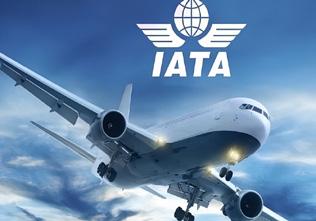
The International Air Transport Association (IATA) announced that RwandAir CEO Yvonne Manzi Makolo has assumed her duties as Chair of the IATA Board of Governors (BoG) for a one-year term, effective from the conclusion of the 79th IATA Annual General Meeting (AGM) in Istanbul, Türkiye on 5 June.
MAKOLO IS THE 81ST CHAIR of the IATA BoG and the first woman to take on this role. She has served on the BoG since November 2020. She succeeds Pegasus Airlines Chairperson of the Board Mehmet Tevfik Nane who will continue to serve on the BoG.
Makolo started her aviation career in 2017 when she was appointed as RwandAir’s Deputy CEO in Charge of Corporate Affairs. She was named CEO in April 2018. Yvonne brought 11 years of commercial expertise to her current role, having joined telecommunications company MTN Rwanda in 2006, rising to the positions of Chief Marketing Officer and Acting CEO.
She was born in Rwanda. In 1993, she voluntarily emmigrated to Canada. Ten years later, in 2003 she returned to Rwanda. She and her older sister were raised by a single mother, Yvonne’s father having died when the daughters were very young.

Makolo has specialised training in information technology and has worked as a software developer, both in Canada and Rwanda. She holds a BA Hons degree from McGill University in Canada and a Post Graduate Diploma in Applied Information Technology.
In 2006, she joined MTN Rwanda, a leading telecommunications service provider in the country. She rose to the position of chief marketing officer and also concurrently served as the chief executive officer in an acting capacity.
In April 2017, when the Cabinet of Rwanda made management changes at Rwandair, Makolo was appointed Deputy CEO, responsible for Corporate Affairs. One year later, she was appointed to the position of managing director and chief executive officer at Rwandair.
In November 2021, Makolo was interviewed by the International Air Transport Association (IATA). During that interview, she was asked what it will take for African aviation to revive. She believes governments must provide more support for aviation. “However, this does not always imply financial assistance”.

“I am honoured and pleased to take on this important role. IATA plays a critical role for all airlines—big and small, various business models, and in all corners of the world. Leading a medium-sized airline in

Africa gives me a unique perspective on issues that airlines hold in common. At the top of the agenda are decarbonization, improving safety, the transformation to modern airline retailing, and ensuring we have costefficient infrastructure. I am particularly pleased to be taking on this role as IATA launches Focus Africa with the aim of unifying the continent’s stakeholders so that together we can strengthen the contribution of aviation to Africa’s social and economic development,” said Makolo.
Under her leadership, RwandAir has become one of Africa’s fastest growing airlines with a fleet of 13 modern aircraft. She has led cultural change at the airline with a focus on inclusion and diversity and growing the number of women in under-represented roles.
Willie Walsh, IATA’s Director General says, “I look forward to working with Yvonne as we tackle the important challenges of sustainability, rebuilding the aviation workforce while growing diversity and reinforcing the global standards that are so critical for efficient connectivity. I want to thank Mehmet for his strong support and leadership over the past year as the industry emerged from the COVID-19 and in particular, his encouragement in working for greater gender diversity.”
C.W. PRICE AND COMPANY has been involved in aviation and meteorological instruments for over 71 years. Based in Midrand, C.W Price are the appointed agents for airport support equipment from aircraft ground power to man portable rugged Redbox power packs for aircraft starting.
They are agents for Eagle All Wheel Drive aircraft tow tugs for regional, corporate and military applications. They import Precision Airmotive fuel injector parts and overhaul kits.

They provide online VitalWeather system for remote or sms monitoring of small airports as well as stand alone weather stations for regional airports.
Contact Kelvin on:
Tel: 011-805-4720
Email: cwp@cwprice.co.za
Website: www.cwprice.co.za
The Red Box range of jump start batteries and aircraft start units are the ideal solution for starting the majority of DC aircraft. They are designed to start aircraft from the very smallest up to the largest business jets.
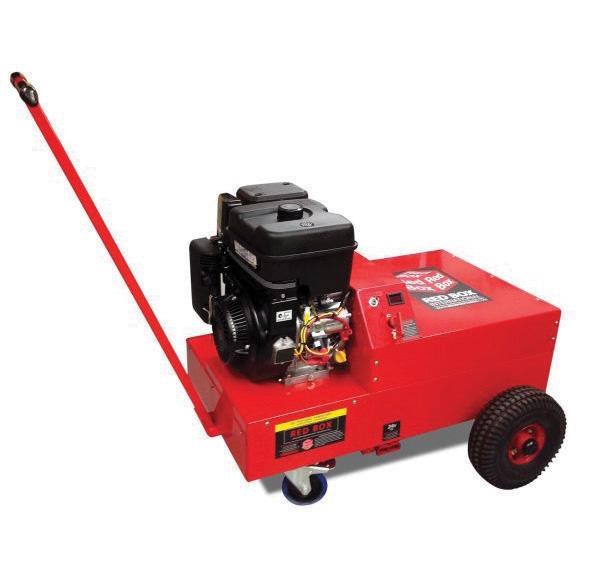

This Red Box unit combines a petrol engine with a bank of batteries to offer the slickest combination unit in the world. The weight and size of this unit is unrivalled, making it the obvious choice of Business Jet owners and operators. It allows for starting and continuous power away from the normal hanger environment so that aircraft on the flightline can be serviced as an alternative to being moved via an aircraft tug into the hanger.
Laura McDermid continues her stories of Iris McCallum’s flying exploits.
I had just accepted a job offer from Robin Hurt, a well-known and respected Professional Hunter (PH). He had recently set up his own company called Tanzania Game Trackers Safaris in Arusha, the safari capital of the world, and had asked me to set up the aviation side of his business.
IRESIGNED FROM LIMBE Leaf Tobacco in Malawi where I had worked for the past three years piloting a Citation SP1, packed up my scant belongings, and in January 1986 began my new job.
I was tasked with finding a fleet of reliable aircraft which would be used to ferry the clients of Tanzania Game Trackers Safaris from the major airports to various bush camps.
I asked a good friend, Buster Ray, to help me with this task. Buster’s father and my dad were PHs together at White Hunters (Africa) Ltd and I recall changing baby Buster’s nappies when I was eight years old. I reckoned he owed me for that, and he was only too keen to join me in this new venture.
Within five months we had managed to source and register a Cessna 206 Stationair 5H-TGT and a Cessna 404 N68071T. In June I bought our third plane through my contacts at Wilson Airport, a Cessna 402C N268PA.
My job was varied; apart from ferrying clients, I was tasked with transporting their precious customdesigned guns. Existing firearms were often modified or in many cases, new ones were built from scratch to ensure that the gun fitted the user’s body type, shooting stance, and preferences.
The law in East Africa at the time stated that higher calibre guns had to be used for the hunting of big game. The .458 Winchester Magnum bolt-action rifle was the
the very active yoke of a C206
most popular. Favoured for its reliability, accuracy, and versatility, the cartridge offered substantial stopping power and was known for its ability to take down large and thick-skinned animals such as elephants, buffalo, and rhinos.
Due to the remoteness of the hunting camps, fresh food was scarce, and produce had to be flown in. Each week I would fly 500nm from the hunting camp in Murungu which lay west of Arusha in the great Moyawasi swamp area, to Arusha Airport, where I would load up on fresh fruit and vegetables that I’d purchase from the local vendors.
Due to the absence of Avgas at Arusha, I would fly back via Kilimanjaro to refuel.
Initially, the transition from the powerful twin Pratt & Whitney turbofan engines onto the Continental IO-520 single-piston engine was my biggest challenge.
Buster didn’t have the C206 on his license, so he was
From three years of comfortable “armchair flying’ in the Citation, I was back behind the very active yoke of a C206.
The 200kt difference in cruising speeds came as a shock to my system. The 500nm from Murungu which would’ve taken 1.5 hours in the jet, now took over 3 hours in the Stationair, as it also meant having to refuel between trips, turning the affair into a day’s outing.
I was back doing some ‘real’ flying and was in my element. The C206 was robust, and its use so varied as to be perfectly suitable for charter flights, surveillance, and cargo operations. Its good short takeoff and landing (STOL) capabilities made it ideal for operating from rudimentary bush strips. In short, it was a fun, pilot-friendly aircraft.
Every year in June, Tanzania Game Tracker Safaris would begin afresh by cutting and burning down the
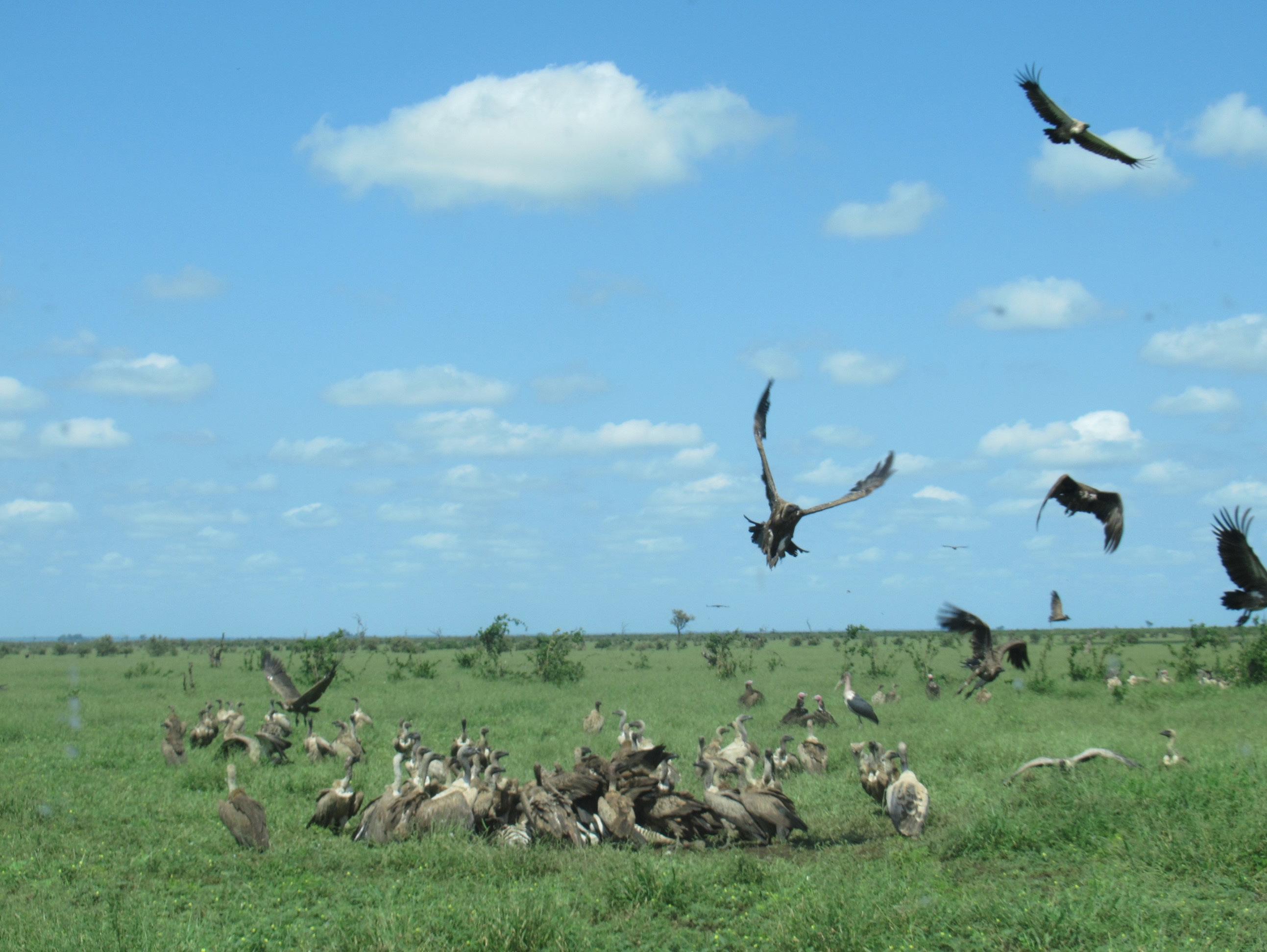
long grass to create new roads and rebuild the disused airstrips and camps.
The regulated hunting season ran from July to November, which meant that illegal hunting and poaching ramped up considerably in the off-season, especially in remote, inaccessible areas. Part of my job was to locate poachers’ lairs.
Every year, the migrating wildebeest and zebra pour out of the western Serengeti, to re-enter the park in the north. Not much skill is needed to trap the wildebeest when they massed to drink in confined places in the dry season. Snares are set in the gaps of game fences, placed along game trails, or left around waterholes.
It is a cruel practice that decimated animals in their thousands. The snare wouldn’t always kill the animal. Many times, the wire would cut through the hide, biting to the bone, trapping the animal for days until it perished from thirst.
It was one thing to kill for the pot, however, there were occasions during the migrations when the wildebeest and zebra were so abundant that the poachers would just cut off the tails to be sold as fly whisks, leaving the carcasses to rot in their thousands.
The use of steel wire for snaring became the weapon of choice after WWII and thanks to the numerous failed mining operations in East Africa, wire was abundant. Unlike the primitive rope snares, wire never deteriorates, and can be used repeatedly.

The introduction of planes for aerial surveillance in the Serengeti in the early 1960s, combined with the dedication of rangers on the ground, made a tangible difference. and although poaching had declined markedly as a result, Tanzania was still plagued by this savage practice as demand from international markets grew.
One of the tell-tale signs of poaching was smoke; the
faintest tendril would give the poachers’ location away. I’d descend as low as the treetops permitted, circling overhead to gauge the magnitude of their operation. At times the poachers would take aim at the aircraft, even killing a helicopter pilot on one occasion.

Like a scene from Ulysses’ underworld, strips of flesh covered every available branch and hung on makeshift racks set over smouldering embers to cure the meat as fast as possible.
The other sign we looked for was circling vultures. Undoubtedly amongst the worst hazards for bush pilots flying over the game areas in Africa are the great birds of prey, and in Tanzania with its endless supply of carrion and prey animals, the concentration of vultures and eagles is immense.
These large birds weighing anything between 5-7kg can be encountered at any altitude from ground level to as high as 12,000ft, and are always in attendance when mighty concentrations of zebra and wildebeest are moving through the park.
A vulture will not avoid an aircraft until the last moment, and they are prone to diving, which meant that one has to pull up to avoid a potential catastrophe.
In 1994, my good friend Ashraf Khan met his fate when he collided with a vulture. When they found his body, the yoke was still tightly clenched in his fists, a sign that he fought until his last breath to keep the C402A airborne. Another notable bird strike was world famous conservationist Michael Grzimek, who died in his Dornier Do-27 after colliding with a lammergeier bearded vulture over the Ngorongoro Crater
Such is flying. You can manage every factor that is in your control, but the reality is that there are many, many unforeseen things that can befall a pilot.
In the words of flying ace Chuck Yeager, ‘If you want to grow old as a pilot, you’ve got to know when to push it, and when to back off.’
AFTER ALL, I have been flying for 38 years now, so how hard can it be to fly tail draggers?
That first flight was utter brain-numbing chaos. I simply did not have enough brain, feet, legs or arms to even remotely follow the unfolding event of a take-off and landing.
My brain freeze had begun just taxiing with a fresh cross wind from the left. Andy Kasperson somehow managed to get the little Cheetah to dance along the runway with a running commentary, “left wheel, right wheel, both wheels, tail wheel, stick forward and into wind, rudder..rudder..speed, speed, let her fly”. Well, my brain was still somewhere inside the hangar and way behind the curve.
They say that flying tailwheels is within reach, even for student pilots. Maybe because students have not got polluted by fixed ideas about how to fly and students have not yet gained “muscle memory” to instinctively
do things in a set way? (Let’s face it, there was a time when everyone’s first aeroplane had a tailwheel.)
Like most aviators, I took the easy way out. I learned on nosewheels initially, and then moved to rotorcraft, only now getting the courage to pursue the coveted tailwheel endorsement. Let me tell you, flying helicopters is easy-peasy, but your feet become insanely lazy.
I have a long way to go….
Tailwheel aeroplanes require purposeful, accurate inputs and there’s less margin for error. Tailwheels are also more sensitive to crosswinds. You might get away with sloppy, insufficient, or incorrect control inputs with a nosewheel. Not in a tailwheel. Andy, my poor long-suffering instructor tells me, “This doesn’t mean they’re always ready to swerve out of control, but they do require you to constantly anticipate and respond.” Well, I don’t believe him, yet.
One of the benefits that I have discovered of tailwheel
There comes a time in one’s life when it feels like it’s time to re awaken the sparkle and wonder of flight by trying something new. There is nothing quite like the sobering snotklap you get as you begin as a fresh student all over again. I had to try to convince myself that, “you’re not crazy, John”.
I’m far from considering any solo
flying, is a heightened awareness of personal and aircraft limitations. That’s good in any aeroplane, or helicopter. There is no doubt that mastering tail wheel flying hones your skills and makes you very much more aware of accuracy.
Insurance rates for tailwheels are higher. However, hopefully they should drop down as one accumulates incident-free hours. Although at this point, I have discovered that it’s not about flying hours, it’s all about how many landings you have logged. It’s all about successfully getting the aeroplane safely locked up inside the hangar in one piece after your landing.
“The secret of change is to focus all your energy not on fighting the old, but on building the new — Socrates”.
When Andy finally endorsed my logbook for tail wheel aircraft, he said that I should think of his signoff as an endorsement to keep motivated and learning with instructors, and then eventually on my own, and not the end of the process.
I decided to jump into the VERY deep end and purchased a beautiful 300 hp Cessna 185…. and yes I’m terrified. I decided to start small and simple, by getting ground and flight training on a Cheetah TD rather than straight on to the C185. My strategy is to do as much recurrent training on a regular basis, then to convert onto other types, working my way up the ladder (at this time it’s more like Mount Everest) to stay safe and avoid the dreaded ground loop.
I like that way of thinking, besides I’m far from considering any solo. This journey has awakened the spirit of continuing to learn and encouraging others to do the same. Possibly I will be able to share my experiences learning to fly a taildragger as I eventually transition to flying my Cessna 185.
Some background: I learned to fly in a MX2 Quicksilver microlight in 1985. My interest in flying was and is adventure, conservation and wildlife. I wanted to save the world's wildlife (Duh!), see our planet from a new perspective, and to challenge myself. I accumulated about 3500 hours over the following seven years on all types of ultralights, mostly as an instructor, then moved onto the Robinson R22 and other helicopter
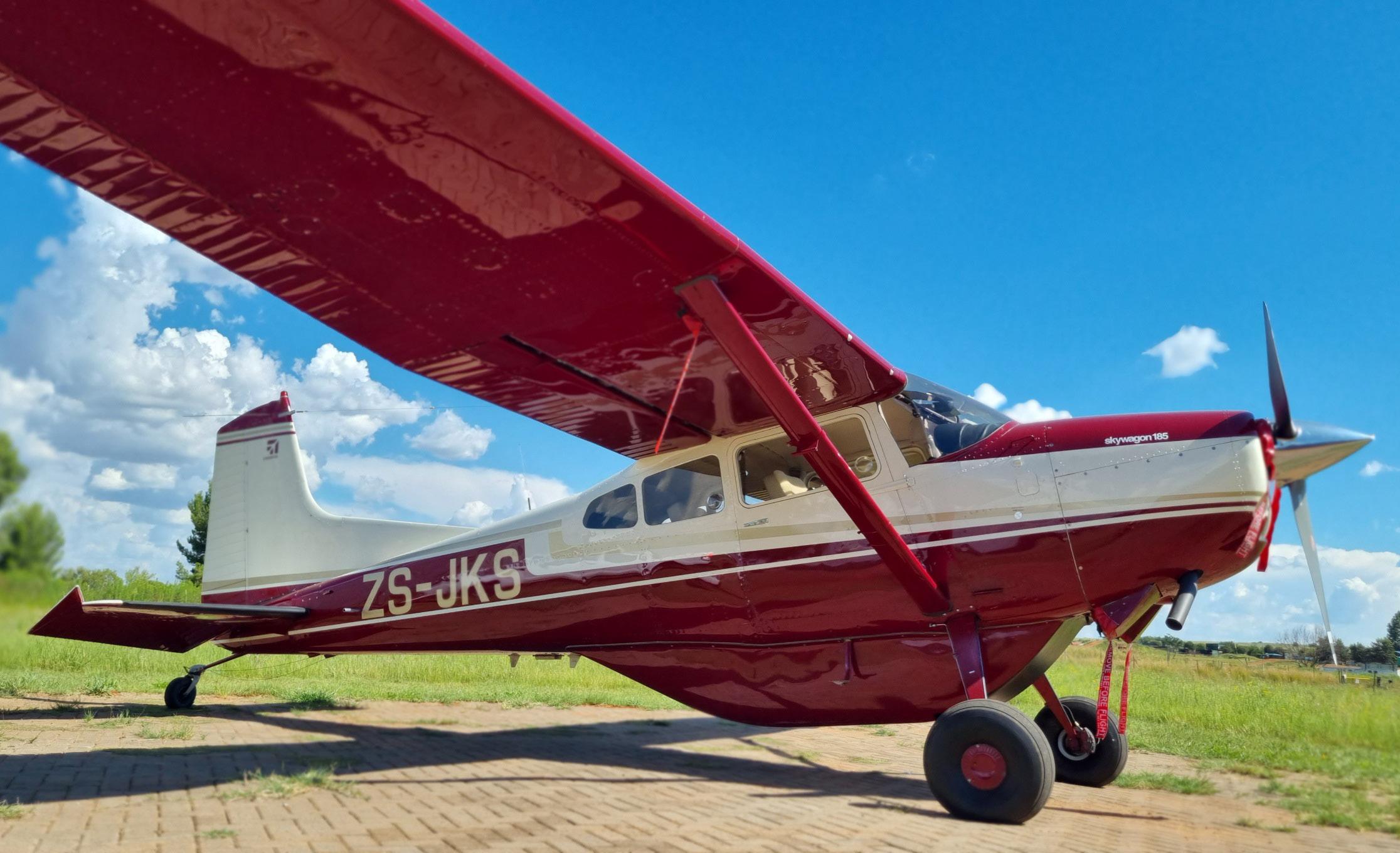
types. Over the following years I transitioned onto the C172, 182 and 206, a Sling and a Foxbat, but never a tail dragger.
I have never had a flight that I did not enjoy, but I started to itch for new challenges. The iconic C185 had awed me from the early days as the ultimate bush plane, evoking dreams of adventure.

I have been flying over some otherworldly landscapes in Africa and have been yearning to explore further, also, I wanted something that would be practical for my conservation and census work, in far away, remote destinations. When the opportunity came along, I couldn’t help myself and bought a Cessna 185 Skywagon.
I’m not just gratuitously throwing my age into this article, but the brain learns differently at different stages of life, and there are times that mine seems a bit slow. Children and young adults have more mental flexibility, while older people can draw on a wider range of experiences to help them learn. So I think my age is relevant in my understanding and appreciating
tricycle aeroplane and helicopter operations and how that knowledge affects my transition to a tail dragger. Also, why things that helped or hindered my progress might be different from those of someone else.
I have to justify why I found the training so difficult.
There are times that I am frustrated with my slow progress (or even regress). It’s a yo-yo of self-doubt and then the sweetest highs. However there really are times when I doubt that I will eventually succeed. But the journey has just begun and all it takes is one sweet wheeler and all that self-doubt has gone. I am hoping that, as in situations before, where I felt overwhelmed by challenges, I know that with patience and persistence I will overcome them.
Another learning tool developed through experience is the technique of breaking a complex task into its most basic, simple components in transitioning to tail dragging. This meant learning to handle a high-performance engine, a complex propeller, and tailwheel landing gear.
IATA DIRECTOR GENERAL Willie Walsh took the opportunity of the organisation’s AGM to rebuke the governments that will play a crucial role in ensuring airlines’ hard work and investments are not in vain.

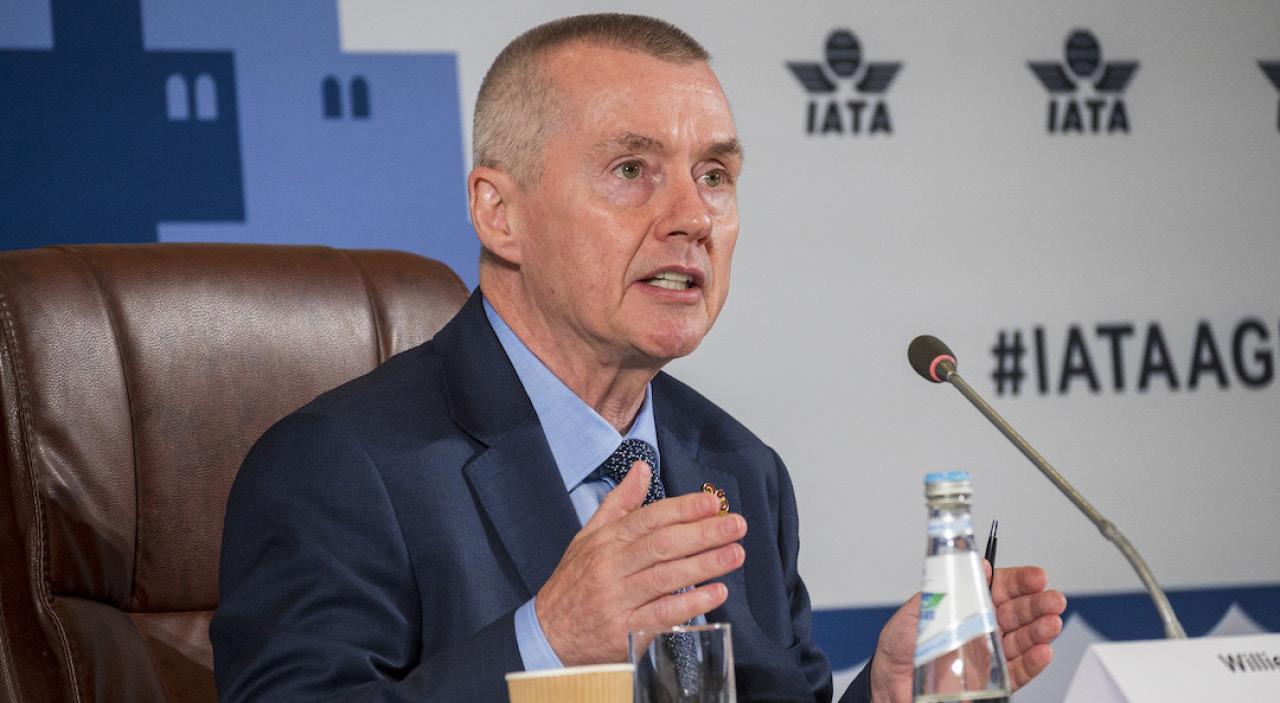
“We’re in a good place; we’re clearly recovering strongly. But when it comes to the role of politicians in tackling the sector’s most-pressing challenges, “it’s time for honesty with these people”, Walsh says. “There’s no point in complaining about what airlines are doing when the root cause is in many cases within direct control of the governments.”
Walsh’s frustration is particularly acute because he believes airlines are “playing our part and delivering on the promises that we have made” on key issues. Walsh cites two topics in particular: Sustainability and air traffic control.
On air traffic management, he expresses concern about air traffic controller shortages in the USA and delays caused by ATC issues in Europe.
“What disappoints me the most is that governments will talk about airlines getting their act together, but this is an area under their control,” he states.
On sustainability, Walsh notes that airlines committed to achieving net-zero CO2 emissions at the height of the Covid-19 crisis, while continuing to allocate “scarce resources” and make “big bets” on sustainabilitylinked investments amid “very, very scarce capital”.
At the same time, however, “it frustrates me on environmental issues when we get lectures from politicians on what we must do and yet they don’t do anything that’s within their own control”. He highlights the absence of progress on the EU’s Single European Sky initiative as an example of that phenomenon.
Inkwazi, the South African Air Force’s Boeing Business Jet (BBJ) used for VIP transport, has been reliably racking up the flying hours this year. In just the past two weeks before writing this column it flew President Ramaphosa tens of thousands of kilometres in back to back trips to Switzerland, Poland, Russia, and now France without a single hitch or serious snag and quick turnarounds between missions.
YET IT WASN’T THAT LONG ago that the South African Presidency and Minister of Defence under the Zuma administration were deriding the BBJ as ‘unreliable’, ‘unsafe’, ‘too old’, and in urgent need of replacement as it was supposedly no longer up to the job of transporting the president.
Between 2011 and 2017 there were numerous attempts to lease or acquire costly new aircraft to replace it, and the frequent and unnecessary use of chartered aircraft in its place. At the same time a wide group of commentators, self-proclaimed experts, and praise-singers were echoing those arguments in opinion pieces, on social media posts, and in appearances on radio and TV. All are now silent on the matter, with the ‘unreliability’ of the BBJ and purported urgency of replacing it entirely forgotten. None have ever walked back or apologised for their statements.
As the public, we should not be allowing our politicians, commentators, and other public figures to conveniently forget about all this, and we should keep it in mind every time there’s a similar debate around acquisitions, requirements, and security for VIP travel. Once bitten, twice shy, and scepticism should be the public’s default position after all the attempts to mislead it.
After all, the first serious attempt to make these arguments and replace the BBJ (and the rest of the VIP fleet) came as early as 2010, soon after Jacob Zuma became president, when the BBJ was just 10 years old. Clearly the argument could not be made that the BBJ was too old, so instead the then Defence Minister Lindiwe Sisulu argued in an internal memo published by the Mail & Guardian that: “One aircraft for intercontinental presidential travel is woefully inadequate.” And that: “In the event that the BBJ is unserviceable or in servicing, there is not another kind of aircraft that is able to fulfil presidential air transport requirements.”
the total package would have easily cost R10 billion
As a result, an attempt was made to acquire a fleet of six brand new dedicated VIP aircraft: Two Boeing 767s for the exclusive use of the president, two BBJs for the deputy president, and two Challenger or Global XRS-sized business jets for ‘former presidents and ministers’. Notably, this was not reportedly preceded by the defined Department of Defence requirements gathering and determination process, such as a Staff Target, a Staff Requirement, a User Requirement Specification, and so on.
That plan presumably came up against the cold hard reality of National Treasury’s beancounters, as the total package would have easily cost R10 billion when including the cost of fitting VVIP interiors.
The focus then shifted toward leasing, perhaps as a way to hide the exorbitant costs inside the SANDF’s operational budget, and the early 2011 agreement with AdoAir of an R800 million five year lease of two Embraer Lineage 1000s. This was, however, done before approval of the department’s legal team had been received, and the Secretary of Defence, Mpumi Mpofu, as the department’s accounting officer refused

to sign off. The department had no choice but to cancel the deal, but soon tried to replace it with another one with Execujet for a second Boeing Business Jet and a Global Express XRS. That, too, fell through. Later in 2011 both Mpumi Mpofu, as Secretary of Defence, and Lt Gen Carlo Gagiano, the Chief of the Air Force, tendered their resignations over the VVIP transport situation. Gagiano’s was not accepted.
AdoAir in the interim sued for damages of R200 million, related to costs accrued while sourcing the aircraft following the signing of the agreement. The case was settled in an out of court settlement a year later, by which time Nosiviwe Mapisa-Nqakula had replaced Sisulu as Minister of Defence. She had though initially contested the case and argued in filed court papers that no payment was due to AdorAir as the entire contract was irregular.
She also soon picked up where her predecessor left off, and in 2012 the South African media reported that the Department of Defence had entered into an initial agreement to acquire a VVIP Boeing 777-200 LR for the president and a Bombardier Global Express 6000
for the deputy president, at a cost of several billion Rand. The agreement lapsed before approval could be received from all relevant departments.
Mapisa-Nqakula continued making a strident case for a new presidential aircraft, saying in 2013: “Every week without fail, we pay millions of rand chartering aircraft for strategic airlift capability, which far exceeds the money we would have spent by purchasing… If you look at some of our aircraft, they’re 60 to 62 years old and should be museum pieces and we use them to ferry our people around… I won’t elaborate on some of the experiences I’ve had and what I’ve seen happening, but this process must begin.”
Yet those were all statements that applied to the Air Force’s aged transport fleets, not to the VVIP aircraft of 21 Squadron, and it was clear that the acquisition of a new VVIP aircraft had priority over new medium and light transport aircraft.
By 2015 a new acquisition plan, Project MOAGI, was set up and Armscor issued a tender for a new VVIP aircraft, specifying that it would have to be capable of carrying 30 passengers in a VIP configuration over a distance of 13 800 km without stopping to refuel and with the usual safety reserves. That requirement alone meant that only a handful of aircraft, such as the Boeing 747, 777 and 787 and the Airbus A330, A350 and A340, had the size and range to meet it. It also meant a likely minimum cost of R3.2 billion for the aircraft if acquired new, as the cheapest aircraft on that list cost over $220 million in their base configurations, and fitting a VIP interior would have added approximately another $100 million or R1.4 billion based on similar examples. All in all, a price tag of R4 billion was highly plausible.
The public outcry was immediate and widespread, causing the government to back down slightly and attempt to justify it. However two notable snags with Inkwazi, the first a leaking fuel pipe detected in Doha, Qatar that meant one of the external fuel tanks could not be used, and the second an overplayed technical problem on the ground in Burundi, provided an excuse to claim that the aircraft was unsafe and needed to be replaced.
For months President Zuma flew only on chartered aircraft, in particular a Super 27 owned by Paramount’s Fortune Air, even though the BBJ was perfectly serviceable. Media reports at the time claimed that the president feared ‘sabotage’, and the personnel at 21 Squadron came under intense, unwelcome, and unpleasant scrutiny.
It was all the reasoning Mapisa-Nqakula needed to justify a new aircraft. At Africa Aerospace & Defence 2016 she insisted that a new VVIP aircraft would be procured within the next eighteen months, and that Inkwazi was unsafe and could not be used: “There are issues with it. It’s 15 years old. Three years ago it was flying 300 hours annually, now it flies 600 hours. The need for a replacement is urgent and is nonnegotiable.”
It was only the victory of Zuma’s opponent within the party, Cyril Ramaphosa, at a party conference in late 2017 and his appointment as president of South Africa in early 2018 that ended the hunt for a new aircraft. While Project MOAGI remains current, there is not currently any serious funding allocated or urgency driving it. After a period of work to restore lapsed maintenance contracts and restore the BBJ to flight, it was brought back into use and has proven reliable since.
It’s true that the BBJ has not had a completely troublefree service life, with the occasional snag disrupting proceedings and the odd incident including the two mentioned before. However, it would be unrealistic to expect that any aircraft would be any different. They’re complex machines, and even with the best maintenance snags will happen. But it speaks well of the reliability of the aircraft and the excellent work done by the SAAF’s technical staff that there have been so few problems over the past 20 years and that none was ever a serious safety issue, given how frequently and extensively it has been used.
At times the BBJ has also been unavailable for reasons that have nothing to do with the aircraft itself, but rather poor planning, mistakes by airport personnel, or local regulations. For instance, last year it was
it was flying 300 hours annually
out of service for months longer than planned while undergoing a C-Check, as there were delays caused by SAA Technical’s difficulties with conducting its first such procedure on a BBJ.
Previously C-Checks and D-Checks had been conducted at Jet Aviation in Switzerland, the OEM for the BBJ’s interior, but in line with an Armscor and SAAF push for local suppliers, the work was contracted to SAA Technical. Later in the year the aircraft was grounded again when the regular tender for Jeppesen navigation data was not completed in time owing to a dispute and mix-up between the Department of Defence and National Treasury. And most recently it was out of action for a month or two after Cape Town International Airport ground staff towed it to the wrong position in a hangar and damaged the vertical tail on an overhead beam.
For both planned and unplanned periods of unavailability the Air Force has the option of chartering, where it benefits from the availability of a relatively large number of suitable private jets on the South African register. In the past this was usually
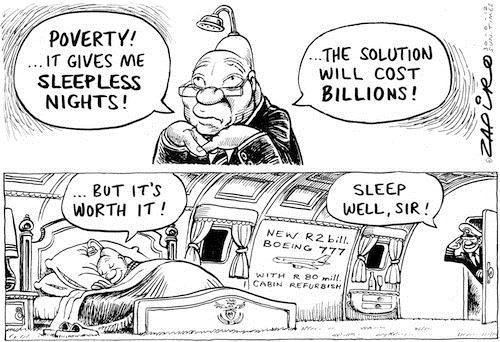
done via the National Treasury’s RT61 transversal contract, which consists of pre-approved and prevetted providers and aircraft. As long as this option is used for genuine instances where the Air Force’s aircraft are not available it’s a cost-effective alternative to having more aircraft in service.
There will also come a time when it does make proper financial and operational sense to replace the BBJ. Arguably, that point has already been reached for the Dassault Falcon 900B and Falcon 50s that make up the rest of 21 Squadron’s VIP fleet. When that happens, it might make more sense to avoid acquiring another dedicated set of VIP aircraft and instead look to follow the example set by other countries of having modular and removable VIP interiors for long range strategic transports, like the A330 MRTT or perhaps the smaller KC-390. That would provide a boost to the Air Force’s operational capabilities, in particular restoring the air refuelling capability lost when the 707s retired, while also meeting VIP transport requirements.
In 2016 musician, Michael Ferguson and commercial Pilot Felix Gosher joined forces to offer underprivileged children the opportunity to experience the joys of flight, a privilege that many of us take for granted. The initiative was inspired by a song by Michael, “Paper Plane” about a young boy with a dream to fly. Through hard work and dedication, his dream is realised.

THROUGH SHEER determination and enthusiasm Felix has initiated many successful Children’s Flight events in South Africa. When he moved to Zambia he was determined to take the concept with him and after long deliberations with the Zambian Air Force and other stakeholders, he managed to host the first Kumbululuka Kwa Bafana Kids’ Flight in 2021 and again in 2022, only even bigger and better.
Saturday 10 June arrived and it was time for Kumbululuka Kwa Bafana 2023. It was an early start as the children were scheduled to arrive at the Airforce Base at 7:00.


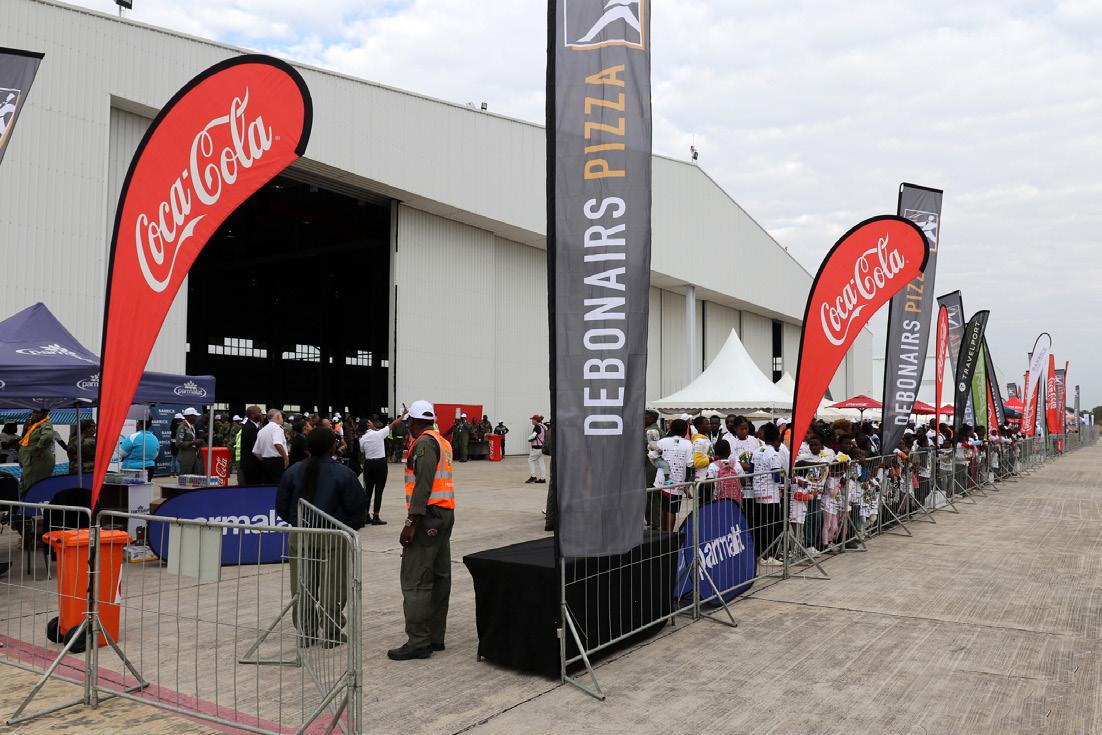
Once all 500 children were safely at the Airforce Base the event was opened in prayer by a ZAF Chaplain. The Chief of the Zambian Airforce, Lt-Gen Colin Barry, then joined a selection of senior officers to acknowledge the Zambian National Anthem played by the ZAF Band. Three ZAF skydivers dropped in from a Harbin Y-12 carrying a large Zambian flag.
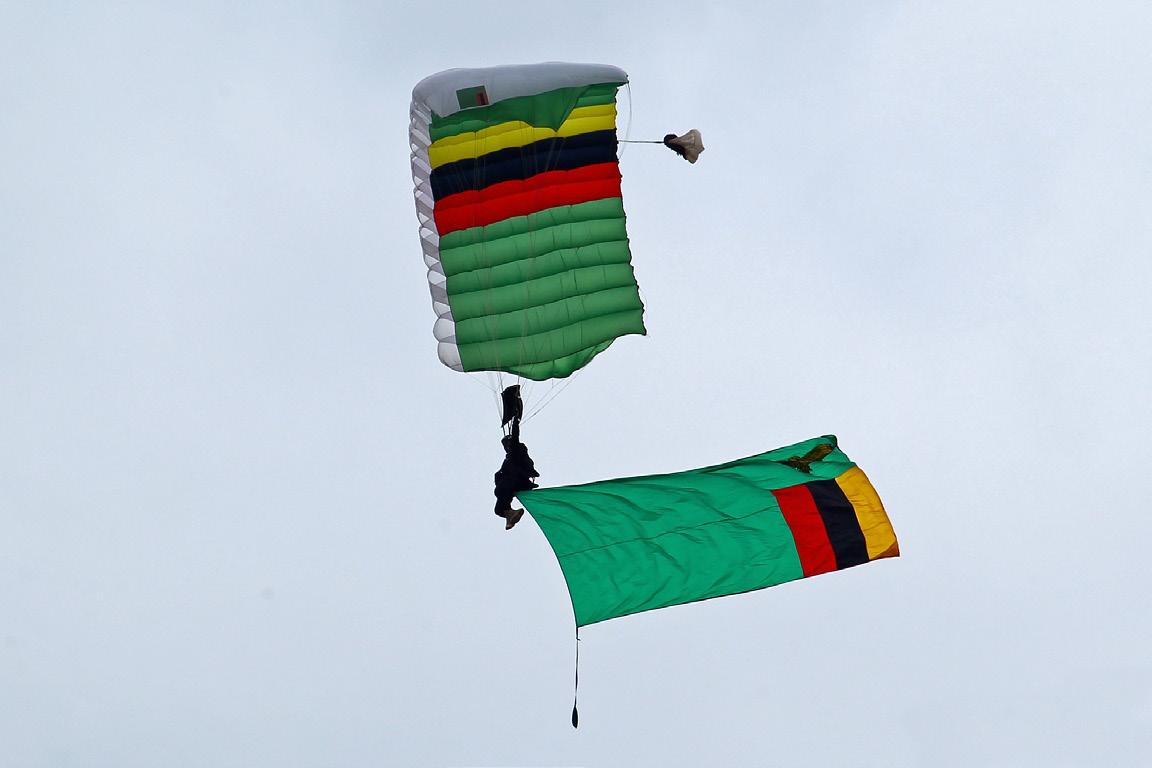
The first group of over 100 children accompanied by a team of carers were then invited onto Proflight’s newly acquired Boeing 737-500 for a rather large circuit over Lusaka. This first flight was known as “Alpha Flight” and was intended to be in two parts. Unfortunately, the second part was a flight in a ZAF Mil-17 helicopter which had to be withdrawn at the last minute for operational deployment.
Once the Boeing was back on the ground the flying started in all earnest. Many sorties
Long lines of children were carefully shephered onto and off the aircraft.

The indomitable Felix Gosher - who makes it all happen.
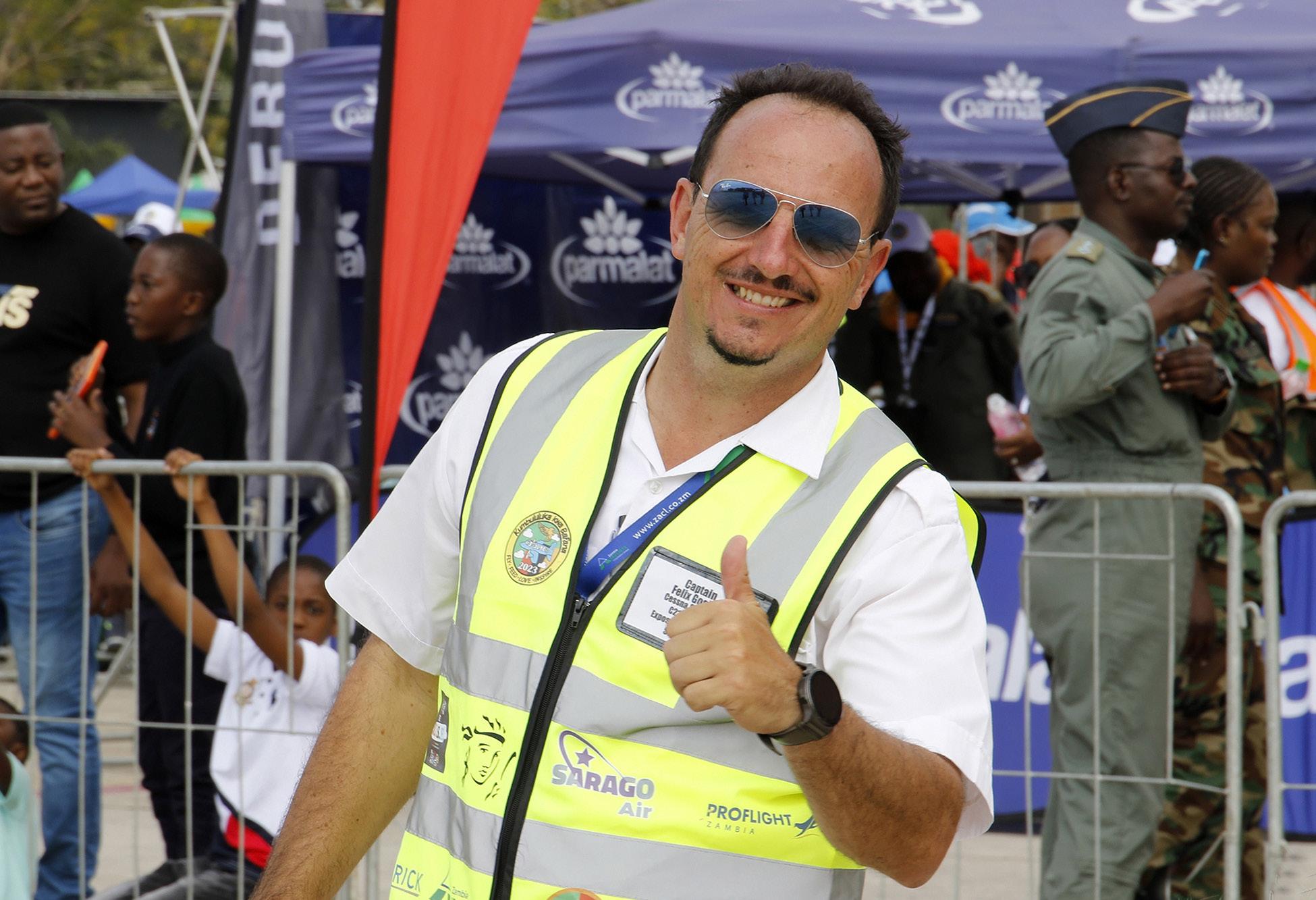
were flown by the the ZAF Beech 1900, Xian MA60, Cessna 208 Caravan and two Harbin Y-12. They were joined by a ProCharter Cessna 208 Caravan.
The proceedings came to a halt when the Zambian Airforce Golden Eagles Aerobatic team took to the air for an excellent display of formation aerobatics. The Golden Eagles flew their Karakorum K-8 lead-in jet trainers directly over the crowd while performing rolls and inverted manoeuvres. Their sequence would have caused an uproar if it was performed in South Africa.
flights in and out of the airport. Despite the delays the children loved it.
After Jason landed, a three-ship formation of Hongdu L-15 Falcon fighter jets took to the sky with a series of high-speed passes. These aircraft were acquired to fill the gap left when the ZAF Mig-21 fleet was grounded.

The programme was held up when one of the K-8s burst a main gear tyre on landing and the runway was closed until the aircraft was retrieved. Jason Beamish had to shut down and wait to get confirmation that the runway was once again operational. After a lengthy wait, Jason was given clearance to commence his display, which he had to break off periodically to allow scheduled
After all the unforeseen delays, the day was quite far behind schedule and that’s when Felix unleashed the civilian squadron that he had put together. A gaggle of Cessna 210, Cessna 206s, Beechcraft Barons, a BrittenNorman BN-2 Islander, a few Slings and even a Zenith SkyJeep spent the afternoon doing circuits for all the remaining children.
Events like this would just not be possible without, firstly, people with the drive and passion of Felix Gosher and his team, and secondly the generous


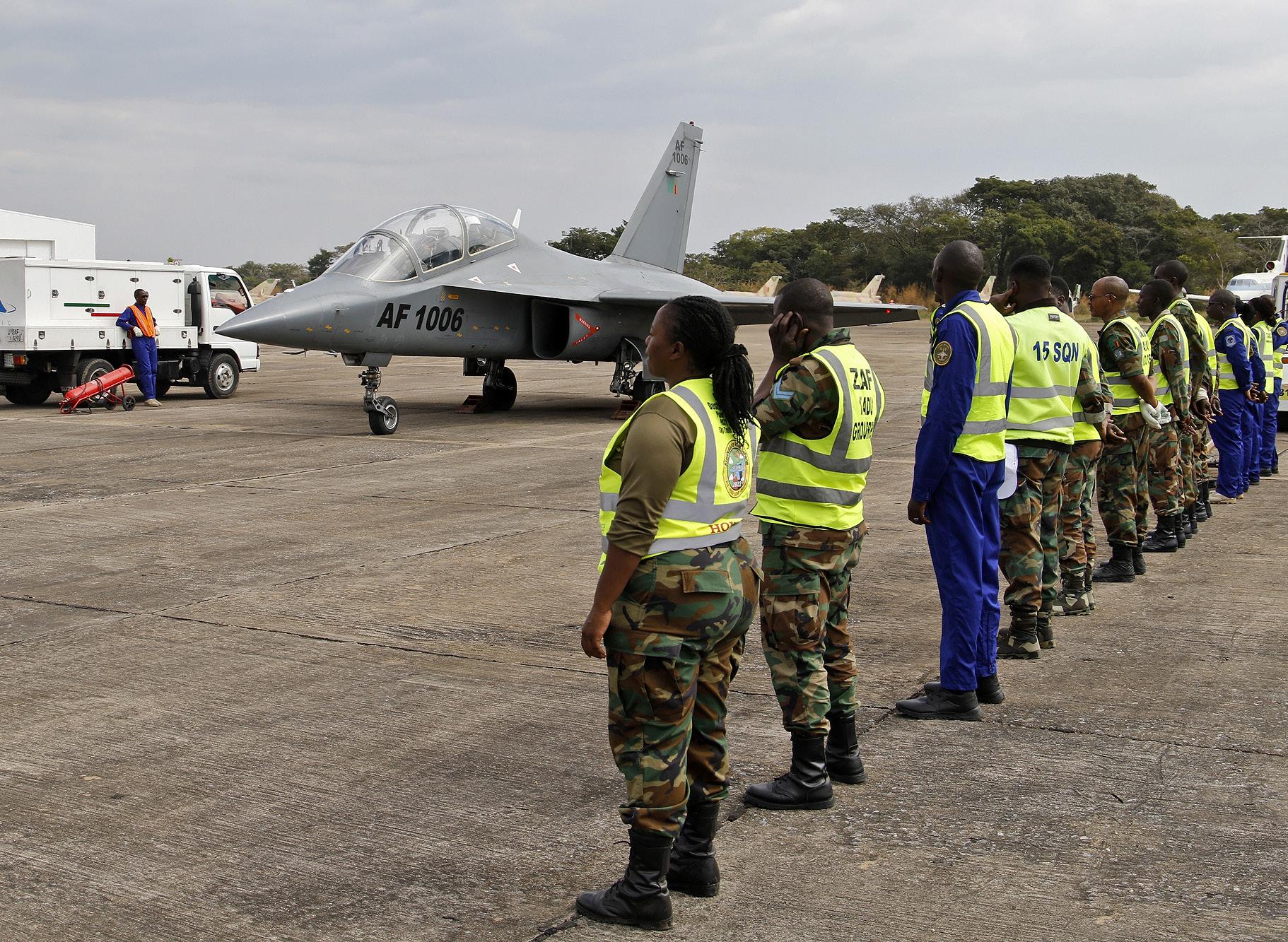

sponsors. Sponsors stepped up to take care of every need the children might have throughout the day. A large variety of food and drinks was made available to the children and the crew. There are too many sponsors to name individually. On a personal note, I’d like to thank ProFlight Zambia for offering the SA media massively reduced rates for the flights to and from

To everyone involved in making the 2023 Kumbululuka Kwa Bafana the success it was, we salute you and thank you for your selfless enthusiasm. You made a difference in many children’s lives.


AT ITS ANNUAL GENERAL MEETING held in Istanbul in June, IATA reminded delegates that safety is aviation’s highest priority. Failure to publish prompt and complete accident investigation reports deprives operators, equipment manufacturers, regulators, infrastructure providers and other concerned stakeholders of critical information that could make flying even safer.
“The accident investigation process is one of our most important learning tools when building global safety standards. But to learn from an accident, we need reports that are complete, accessible and timely,” said Willie Walsh, IATA’s Director General.

The requirements of the Convention of International Civil Aviation (Chicago Convention) Annex 13 are clear. States in charge of an accident investigation must:
• Submit a preliminary report to the International Civil Aviation Organization (ICAO) within 30 days of the accident.
• Publish the final report, that is publicly available, as soon as possible and within 12 months of the accident.
• Publish interim statements annually should a final report not be possible within 12 months.
Only 96 of the 214 accident investigations during the period 2018-2022 conform with the requirements of the Chicago Convention. Just 31 reports were published in less than one year of the accident with the majority (58) taking between 1–3 years. In addition to the fact that final reports regularly take more than a year, interim statements often provide little more than what was presented in the preliminary report.
“Over the past five years, fewer than half of the required accident reports meet the standards for thoroughness and timeliness. This is an inexcusable violation of requirements stated clearly in the Chicago Convention. As an industry we must raise our voice to governments in defence of the accident investigation process enshrined in Annex 13. And we count on ICAO to remind states that the publication of a complete accident report is not optional, it is an obligation under Annex 13 of the Chicago Convention,” said Walsh.
In 1960 Rhodesia was the breadbasket of Africa. I lived in Salisbury, a pleasant fully functional city, with a perfect climate; ideal for flying. I was employed as an apprentice aircraft engineer at Central African Airways, the forerunner of Air Zimbabwe.

NORTHWEST OF SALISBURY’S main International airport lay Mount Hampden airport (now named Charles Prince, after a former flying instructor). This small general aviation airfield had two cross wide grass runways, and hosted the Mashonaland Flying Club and a small aircraft maintenance facility.
The club owned two 85 horse power Piper J3 Cub training aircraft: VP-YFT which was a standard Cub yellow colour, and VP-YHL which was a dull grey.
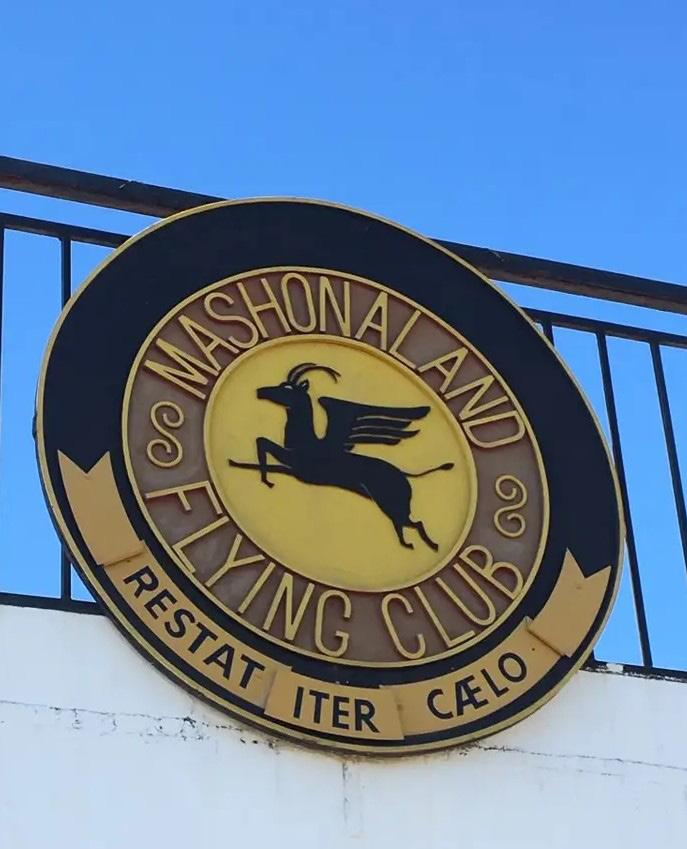
The cost of flying these machines was three Rhodesian Pounds per hour. My meagre apprentice salary only permitted me to fly for half an hour intervals, which I did on sunny Saturday afternoons.
I had built and flown model aircraft for most of my teenage years, including flying engine powered control line models in “Team Racing” and “Aerobatic” events. Consequently, I had a fairly comprehensive knowledge of basic aerodynamics.
At the age of ten my father had bought me one of the once familiar softcover “Teach Yourself Books.” Mine was entitled “Teach Yourself to Fly.” I avidly perused this excellent little book which explained every basic aspect of powered flight in easy to understand steps from takeoff, climb, cruise, turning, decent and landing. It went on to basic aerobatic manoeuvres, including side-slipping, which was useful for descending rapidly toward a runway without increasing speed in aircraft not fitted with flaps.
My ab initio instruction proceeded well, though the Cub was noisy and we did not have the benefit of an intercom system, nor of course the yet to be invented noise cancelling headphones. Also, neither of the Piper Cubs was fitted with radio. So, our takeoff and landing permissions were given by a hand held Aldis lamp directing either a red or green light at aircraft from the control tower.
The Piper J3 Cub is flown from the back seat,
particularly solo, to preserve the correct centre of gravity. With a passenger or instructor in the front seat the forward vision was somewhat obscured. However, the front seat instructor often leaned one way or the other to allow the instrument panel to be seen from the rear seat. The principal instruments were the air speed indicator, altimeter, compass, turn and slip indicator, rev counter (which went backwards – i.e. anti-clockwise) and engine temperature and pressure gauges.
One bright windless Saturday afternoon, while practicing circuits and landings my assistant instructor, a Mr. Henry Cowan told me to make the next landing a full stop.
I looked at my watch and thought I was being short changed. I did as requested and was surprised when the instructor said; “I’m getting out, and another instructor is going to do a circuit with you.”
With the engine still running the new instructor, a Mr
Stam, climbed in and said, “Let’s go.” I taxied back to the end of the runway, performed the basic checks, was given a green light from the tower, took off, flew the circuit and landed.
The new instructor said, “Taxi to the clubhouse, and stop there.” I did as instructed, and being naive thought a new student would be taking my place, as this was common practice, rather than stopping the engine and having to get someone to hand swing the propeller to start it again.
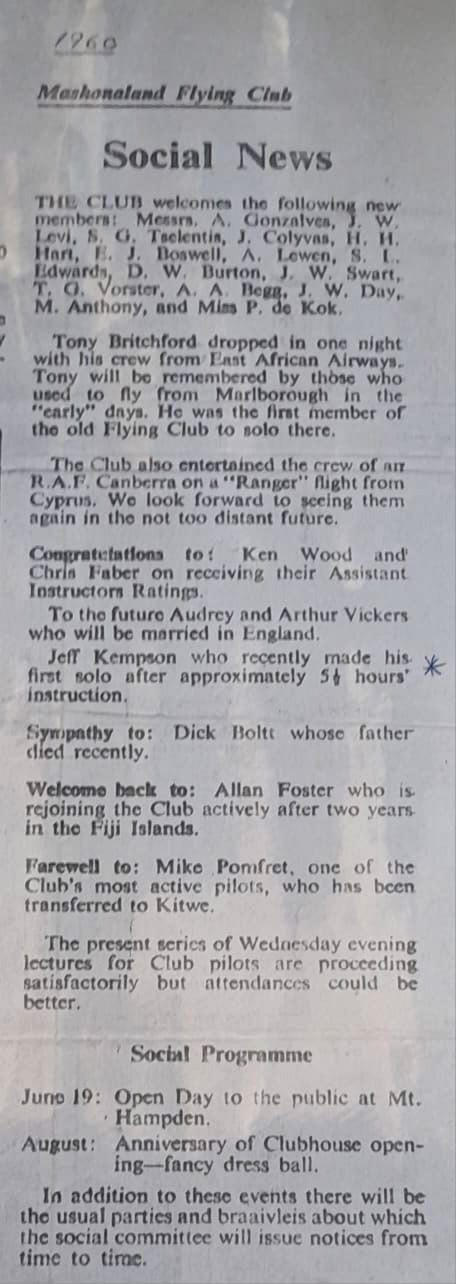
I undid my seat belt, and opened the upper and lower hinged perspex window and door preparatory to getting out. The new instructor deplaned, turned to me and said “Go off and do one circuit, then stop back here. You’ll find the aircraft will be a bit more lively with only one person in it.”
I did up my seat belt and closed the double latched window and door and taxied out thinking, “I hope this instructor hasn’t confused me with some higher flight time flight student.”
At the end of the runway I received a green light from the tower and opened the throttle. The engine roared and we accelerated more rapidly than usual. Then I pushed the stick forward to raise the tail wheel and get the aircraft into the correct take off attitude. The view through the windscreen without the usual obscuring instructor was excellent. The next moment the Cub began a gentle swing to the left, and I brought it back with rudder, only to find the machine was now swinging gradually the other way, and not responding to my opposite rudder input.
I brought the aircraft back inline with the runway by using the rudimentary heel activated asymmetric wheel brakes, but once again the aircraft started to swing to the right across the wide grass runway. The speed was increasing, and we were now heading towards the club house. I felt that any further correction to regain the centre of the runway might damage the undercarriage. The club house was now
beginning to loom large in the windscreen and a glance at the airspeed indicator showed sufficient flying speed, so I eased the stick back and the Cub lifted easily into the air and zoomed about thirty feet above the clubhouse, I looked down and noticed the group of first solo watching members ducking and scattering. Except for my proud father who remained unmoved, his upturned white face watching my passage.
As I climbed away, the aircraft appeared to fly quite normally. I flew a circuit, and did a decent landing. Taxing up to the club house, I parked, and an angry instructor opened the perspex hatched doorway, pulled the mixture knob out to cut the engine off and shouted; “What do you think you were playing at, you young fool?”
A calmer voice then interjected, and said “I can see what the trouble is.” He pointed to my seat belt. We looked down and noticed that when I’d thought I was going to get out of the aircraft earlier I’d undone my seat belt, but when told I was going to fly solo, I’d done it up again. However, when I did it up, I inadvertently trapped the right side rudder cable that ran internally
from that rudder pedal between my waist and my seat belt. Consequently, when I moved the rudder pedals when leaning to one side in order to see over the raised nose during the take off roll my body was sporadically trapping the cable, and consequently the rudder in extreme positions, creating the yawing excursions.
I was so inexperienced and naive that it never occurred to me to close the throttle and bring the aircraft to a stop. Besides, I was going solo, something I’d dreamed of for most of my young life.
Over the ensuing years I was occasionally further disappointed to learn that my basically comprehensive “Teach yourself to fly book” hadn’t covered every eventuality.
However, I was pleased to be told that I had broken the club record by going solo in five and a quarter hours. The later, printed commendation in the Mashonaland Flying Club magazine proclaimed that I had gone solo in approximately five and a half hours. That small inaccuracy rankled at the time.

I’m getting out







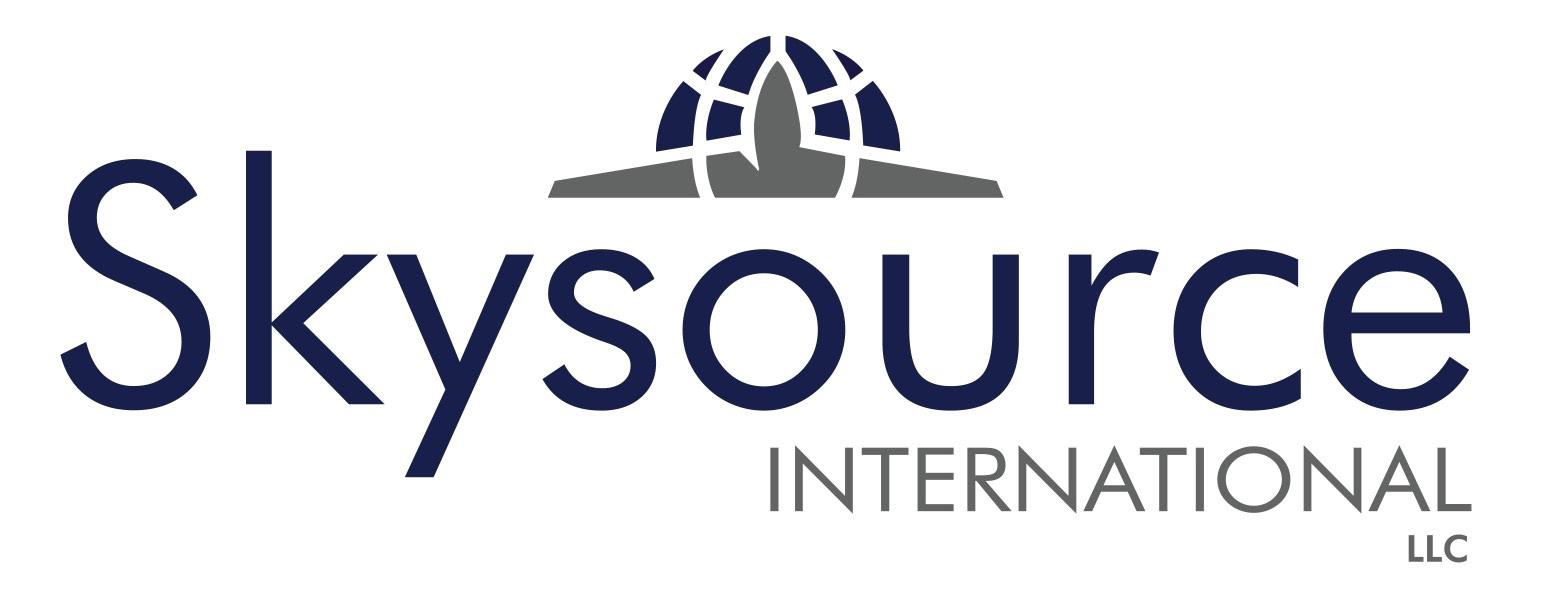
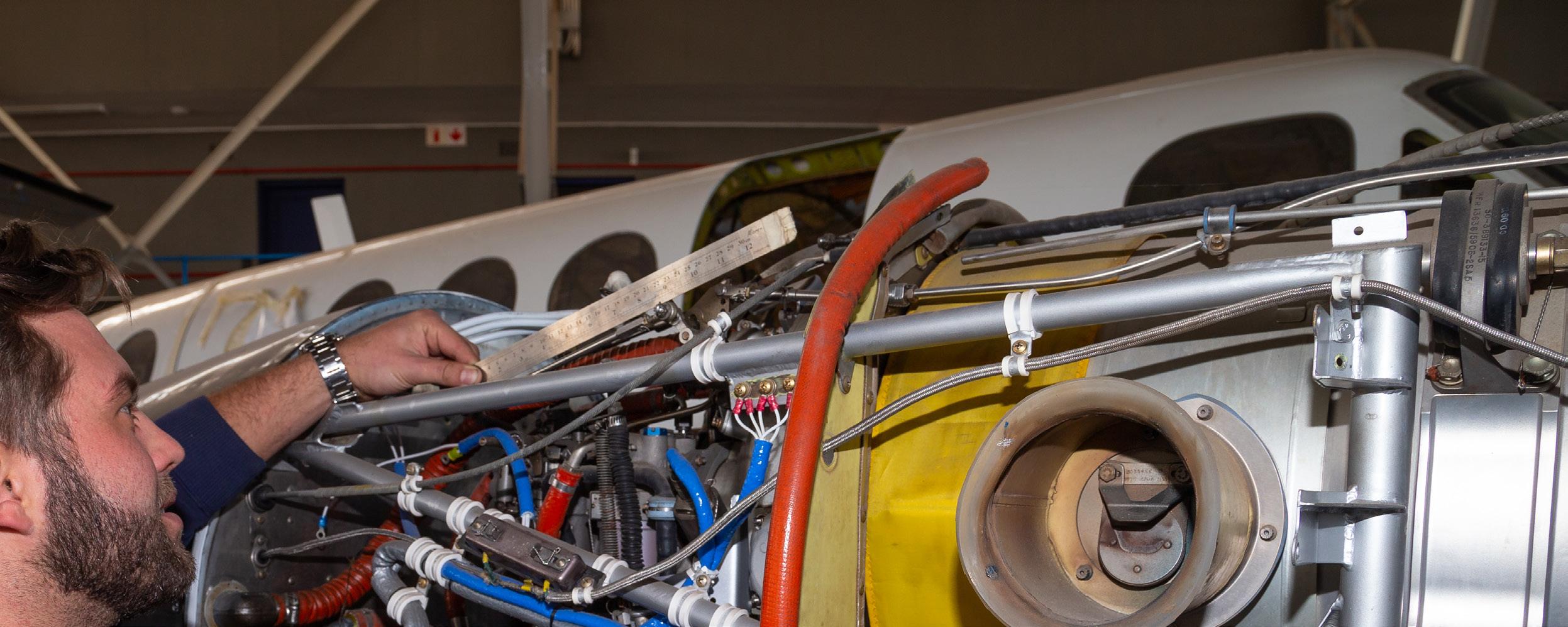
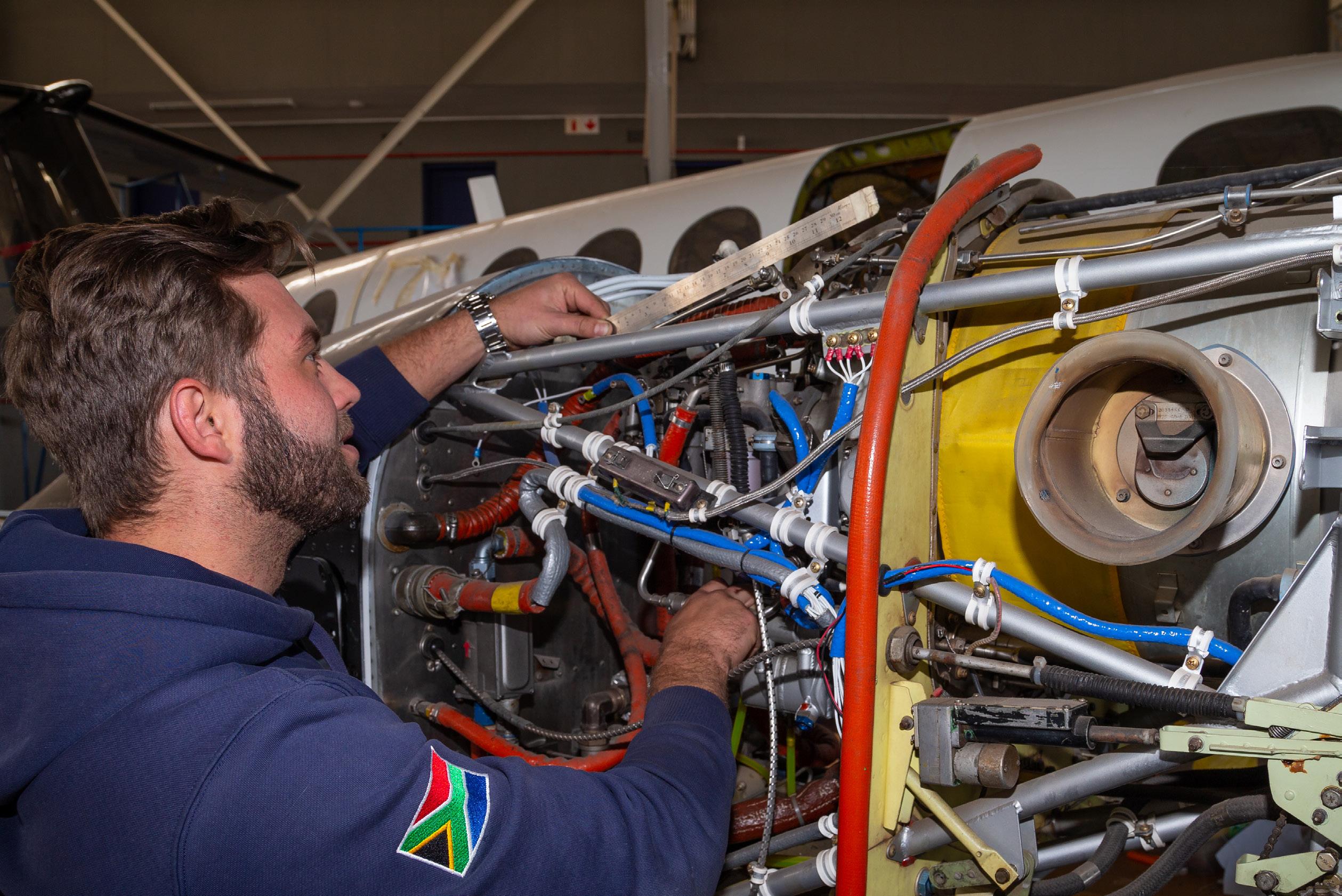

Air Line Pilots’ Association
208 Aviation
Ben Esterhuizen +27 83 744 3412 ben@208aviation.co.za www.208aviation.com
A1A Flight Examiner (Loutzavia)
Jannie Loutzis 012 567 6775 / 082 416 4069 jannie@loutzavia.co.za www.loutzavia.co.za
AES (Cape Town)
Erwin Erasmus 082 494 3722 erwin@aeroelectrical.co.za www.aeroelectrical.co.za
AES (Johannesburg)
Danie van Wyk 011 701 3200 office@aeroelectrical.co.za www.aeroelectrical.co.za
Aerocolour cc
Alfred Maraun 082 775 9720 aeroeng@iafrica.com
Aero Engineering & PowerPlant
Andre Labuschagne 012 543 0948 aerocolour@telkomsa.net
Aerokits
Jean Crous 072 6716 240 aerokits99@gmail.com
Aeronav Academy
Donald O’Connor 011 701 3862 info@aeronav.co.za www.aeronav.co.za
Aeronautical Aviation
Clinton Carroll 011 659 1033 / 083 459 6279 clinton@aeronautical.co.za www.aeronautical.co.za
Aerospace Electroplating
Oliver Trollope 011 827 7535 petasus@mweb.co.za
Aerotel
Martin den Dunnen 087 6556 737 reservations@aerotel.co.za www.aerotel.co.za
Aerotric
Richard Small 083 488 4535 aerotric@aol.com
Aviation Rebuilders cc Lyn Jones 011 827 2491 / 082 872 4117 lyn@aviationrebuilders.com www.aviationrebuilders.com
AVIC International Flight Academy (AIFA)
Theo Erasmus 082 776 8883 rassie@aifa.co.za
Air 2000 (Pty) Ltd
Anne Gaines-Burrill 011 659 2449 - AH 082 770 2480 Fax 086 460 5501 air2000@global.co.za www.hunterssupport.com
Aircraft Finance Corporation & Leasing
Jaco Pietersen +27 [0]82 672 2262 jaco@airfincorp.co.za
Jason Seymour +27 [0]82 326 0147 jason@airfincorp.co.za www.airfincorp.co.za
Aircraft General Spares
Eric or Hayley 084 587 6414 or 067 154 2147 eric@acgs.co.za or hayley@acgs.co.za www.acgs.co.za
Aircraft Maintenance International Pine Pienaar 083 305 0605 gm@aminternational.co.za
Aircraft Maintenance International Wonderboom Thomas Nel 082 444 7996 admin@aminternational.co.za
Sonia Ferreira 011 394 5310 alpagm@iafrica.com www.alpa.co.za
Airshift Aircraft Sales
Eugene du Plessis 082 800 3094 eugene@airshift.co.za www.airshift.co.za
Alclad Sheetmetal Services
Ed Knibbs 083 251 4601 ed@alclad.co.za www.alclad.co.za
Algoa Flying Club Sharon Mugridge 041 581 3274 info@algoafc.co.za www.algoafc.co.za
Alpi Aviation SA
Dale De Klerk 082 556 3592 dale@alpiaviation.co.za www.alpiaviation.co.za
Apco (Ptyd) Ltd
Tony/Henk + 27 12 543 0775 apcosupport@mweb.co.za www.apcosa.co.za
Ardent Aviation Consultants Yolanda Vermeulen 082 784 0510 yolanda@ardentaviation.co.za www.ardentaviation.co.za
Ascend Aviation Marlo Kruyswijk 079 511 0080 marlo@ascendaviation.co.za www.ascendaviation.co.za
Atlas Aviation Lubricants
Steve Cloete 011 917 4220 Fax: 011 917 2100 sales.aviation@atlasoil.co.za www.atlasaviation.co.za
AVDEX (Pty) Ltd
Tania Botes 011 954 15364 info@avdex.co.za www.avdex.co.za
Aviatech Flight Academy
Nico Smith 082 303 1124 viatechfakr@gmail.com www.aviatech.co.za
Aviation Direct Andrea Antel 011 465 2669 info@aviationdirect.co.za www.aviationdirect.co.za
Avtech Riekert Stroh 082 749 9256 avtech1208@gmail.com
BAC Aviation AMO 115 Micky Joss 035 797 3610 monicad@bacmaintenance.co.za
Blackhawk Africa Cisca de Lange 083 514 8532 cisca@blackhawk.aero www.blackhawk.aero
Blue Chip Flight School Henk Kraaij 012 543 3050 bluechip@bluechip-avia.co.za www.bluechipflightschool.co.za
Bona Bona Game Lodge MJ Ernst 082 075 3541 mj@bonabona.co.za www.bonabona.co.za
Border Aviation Club & Flight School
Liz Gous 043 736 6181 admin@borderaviation.co.za www.borderaviation.co.za
Breytech Aviation cc 012 567 3139 Willie Breytenbach admin@breytech.co.za
Celeste Sani Pak & Inflight Products
Steve Harris 011 452 2456 admin@chemline.co.za www.chemline.co.za
Cape Town Flying Club Beverley Combrink 021 934 0257 / 082 821 9013 info@capetownflyingclub.co.za www.@capetownflyingclub.co.za
Century Avionics cc Carin van Zyl 011 701 3244 sales@centuryavionics.co.za www.centuryavionics.co.za
Chemetall Wayne Claassens 011 914 2500 wayne.claassens@basf.com www.chemetall.com
Chem-Line Aviation & Celeste Products
Steve Harris 011 452 2456 sales@chemline.co.za www.chemline.co.za
Clifton Electronics cc CJ Clifton / Irene Clifton 079 568 7205 / 082 926 8482 clive.iclifton@gmail.com
Comair Flight Services (Pty) Ltd Reception +27 11 540 7640/FAX: +27 11 252 9334 info@flycfs.co.za www.flycfs.co.za
Corporate-Aviators/Affordable Jet Sales
Mike Helm 082 442 6239 corporate-aviators@iafrica.com www.corporate-aviators.com
CSA Aviation – Cirrus South Africa
Alex Smith 011 701 3835 alexs@cirrussa.co.za www.cirrussa.co.za
C. W. Price & Co
Kelvin L. Price 011 805 4720 cwp@cwprice.co.za www.cwprice.co.za
Dart Aeronautical Jaco Kelly 011 827 8204 dartaero@mweb.co.za
Dart Aircraft Electrical Mathew Joubert 011 827 0371 Dartaircraftelectrical@gmail.com www.dartaero.co.za
Diepkloof Aircraft Maintenance cc Nick Kleinhans 083 454 6366 diepkloofamo@gmail.com
DJA Aviation Insurance 011 463 5550 0800Flying mail@dja-aviation.co.za www.dja-aviation.co.za
Dynamic Propellers Andries Visser 011 824 5057 082 445 4496 andries@dynamicpropeller.co.za www.dynamicpropellers.co.za
Eagle Flight Academy Mr D. J. Lubbe 082 557 6429 training@eagleflight.co.za www.eagleflight.co.za
Execujet Africa 011 516 2300 enquiries@execujet.co.za www.execujet.com
Federal Air Rachel Muir 011 395 9000 shuttle@fedair.com www.fedair.com
Ferry Flights int.inc. Michael (Mick) Schittenhelm 082 442 6239 ferryflights@ferry-flights.com www.ferry-flights.com
F Gomes Upholsters Carla de Lima 083 602 5658 delimaCarla92@gmail.com
Fireblade Aviation 010 595 3920 info@firebladeaviation.com www.firebladeaviation.com
Flight Training College Cornell Morton 044 876 9055 ftc@flighttrainning.co.za www.flighttraining.co.za
Flight Training Services Amanda Pearce 011 805 9015/6 amanda@fts.co.za www.fts.co.za
Fly Jetstream Aviation Henk Kraaij 083 279 7853 charter@flyjetstream.co.za www.flyjetstream.co.za
Flying Unlimited Flight School (Pty) Ltd Riaan Struwig 082 653 7504 / 086 770 8376 riaan@ppg.co.za www.ppg.co.za
Flyonics (Pty) Ltd Michael Karaolis 010 109 9405 michael@flyonics.co.za www.flyonics.co.za
Gemair Andries Venter 011 701 2653 / 082 905 5760 andries@gemair.co.za
GIB Aviation Insurance Brokers Richard Turner 011 483 1212 aviation@gib.co.za www.gib.co.za
Guardian Air 011 701 3011 082 521 2394 ops@guardianair.co.za www.guardianair.co.za
Heli-Afrique cc Tino Conceicao 083 458 2172 tino.conceicao@heli-afrique.co.za
Henley Air Andre Coetzee 011 827 5503 andre@henleyair.co.za www.henleyair.co.za
Hover Dynamics Phillip Cope 074 231 2964 info@hover.co.za www.hover.co.za
Indigo Helicopters Gerhard Kleynhans 082 927 4031 / 086 528 4234 veroeschka@indigohelicopters.co.za www.indigohelicopters.co.za
IndigoSat South Africa - Aircraft Tracking Gareth Willers 08600 22 121 sales@indigosat.co.za www.indigosat.co.za
International Flight Clearances Steve Wright 076 983 1089 (24 Hrs) flightops@flyifc.co.za www.flyifc.co.za
Investment Aircraft
Quinton Warne 082 806 5193 aviation@lantic.net www.investmentaircraft.com
Jabiru Aircraft
Len Alford 044 876 9991 / 044 876 9993 info@jabiru.co.za www.jabiru.co.za
Jim Davis Books
Jim Davis 072 188 6484 jim@border.co.za www.jimdavis.co.za
Joc Air T/A The Propeller Shop Aiden O’Mahony 011 701 3114 jocprop@iafrica.com
Johannesburg Flying Academy
Alan Stewart 083 702 3680 info@jhbflying.co.za www.jhbflying.co.za
Kishugu Aviation +27 13 741 6400 comms@kishugu.com www.kishugu.com/kishugu-aviation
Khubenker Energy (Pty) Ltd T/A Benveroy
Vernon Bartlett 086 484 4296 vernon@khubenker.co.za www.khubenker.co.za
Kit Planes for Africa
Stefan Coetzee 013 793 7013 info@saplanes.co.za www.saplanes.co.za
Kzn Aviation (Pty) Ltd
Melanie Jordaan 031 564 6215 mel@kznaviation.co.za www.kznaviation.co.za
Lanseria Aircraft Interiors
Francois Denton 011 659 1962 / 076 810 9751 francois@aircraftcompletions.co.za
Lanseria Flight Centre
Ian Dyson Tel: +27 11 312 5166, F: +27 11 312 5166 ian@flylfc.com www.flylfc.com
Lanseria International Airport
Mike Christoph 011 367 0300 mikec@lanseria.co.za www.lanseria.co.za
Leading Edge Aviation cc
Peter Jackson Tel 013 741 3654 Fax 013 741 1303 office@leaviation.co.za www.leadingedgeaviation.co.za
Legend Sky 083 860 5225 / 086 600 7285 info@legendssky.co.za www.legendsky.co.za
Litson & Associates (Pty) Ltd
OGP/BARS Auditing & Advisory Services & Aviation Safety Training
Email: Phone:enquiries@litson.co.za 27 (0) 8517187 www.litson.co.za
Litson & Associates Risk Management Services (Pty) Ltd
eSMS-S™/ eTENDER/ e-REPORT / Aviation Software Systems
Email: Phone:enquiries@litson.co.za 27 (0) 8517187 www.litson.co.za
Loutzavia Aircraft Sales
Henry Miles 082 966 0911 henry@loutzavia.co.za www.loutzavia.co.za
Loutzavia Flight Training
Gerhardt Botha 012 567 6775 ops@loutzavia.co.za www.loutzavia.co.za
Loutzavia-Pilots and Planes
Maria Loutzis 012 567 6775 maria@loutzavia.co.za www.pilotsnplanes.co.za
Loutzavia Rand
Frans Pretorius 011 824 3804 rand@loutzavia.co.za www@loutzavia.co.za
Lowveld Aero Club Pugs Steyn 013 741 3636 Flynow@lac.co.za
Maverick Air Charters
Lourens Human 082 570 2743 ops@maverickair.co.za www.maverickair.co.za
MCC Aviation Pty Ltd
Claude Oberholzer 011 701 2332 info@flymcc.co.za www.flymcc.co.za
Mistral Aviation Services Peter de Beer 083 208 7249 peter@mistral.co.za
MH Aviation Services (Pty) Ltd
Marc Pienaar 011 609 0123 / 082 940 5437 customerrelations@mhaviation.co.za www.mhaviation.co.za
M and N Acoustic Services cc Martin de Beer 012 689 2007/8 calservice@mweb.co.za
Metropolitan Aviation (Pty) Ltd
Gert Mouton 082 458 3736 herenbus@gmail.com
Money Aviation Angus Money 083 263 2934 angus@moneyaviation.co.za www.moneyaviation.co.za
North East Avionics Keith Robertson +27 13 741 2986 keith@northeastavionics.co.za deborah@northeastavionics.co.za www.northeastavionics.co.za
Orsmond Aviation 058 303 5261 info@orsmondaviation.co.za www.orsmondaviation.co.za
Owenair (Pty) Ltd Clive Skinner 082 923 9580 clive.skinner@owenair.co.za www.owenwair.co.za
Par-Avion Exclusive Catering Jakkie Vorster 011 701 2600 accounts@par-avion.co.za www.par-avion.co.za
PFERD-South Africa (Pty) Ltd Hannes Nortman 011 230 4000 hannes.nortman@pferd.co.za www.pferd.com
Plane Maintenance Facility
Johan 083 300 3619 pmf@myconnection.co.za
Powered Flight Charters
Johanita Jacobs Tel 012 007 0244/Fax 0866 66 2077 info@poweredflight.co.za www.poweredflight.co.za
Powered Flight Training Centre
Johanita Jacobs Tel 012 007 0244/Fax 0866 66 2077 info@poweredflight.co.za www.poweredflight.co.za
Precision Aviation Services Marnix Hulleman 012 543 0371 marnix@pasaviation.co.za www.pasaviation.co.za
Propeller Centre Theuns du Toit +27 12 567 1689 / +27 71 362 5152 theuns@propcentre.co.za www.propcentre.com
Rainbow SkyReach (Pty) Ltd
Mike Gill 011 817 2298 Mike@fly-skyreach.com www.fly-skyreach.com
Rand Airport Stuart Coetzee 011 827 8884 stuart@randairport.co.za www.randairport.co.za
Dr Rudi Britz Aviation Medical Clinic
Megan 066 177 7194 rudiavmed@gmail.com Wonderboom Airport
SAA Technical (SOC) Ltd
SAAT Marketing 011 978 9993 satmarketing@flysaa.com www.flysaa.com/technical
SABRE Aircraft
Richard Stubbs 083 655 0355 richardstubbs@mweb.co.za www.aircraftafrica.co.za
Savannah Helicopters De 082Jager 444 1138 / 044 873 3288 dejager@savannahhelicopters.co.za www.savannahhelicopters.co.za
Scenic Air
Christa van Wyk +264 612 492 68 windhoek@scenic-air.com www.scenic-air.com
Sheltam Aviation Durban
Susan Ryan 083 505 4882 susanryan@sheltam.com www.sheltamaviation.com
Sheltam Aviation PE
Brendan Booker 082 497 6565 brendanb@sheltam.com www.sheltamaviation.com
Signature Flight Support Cape Town
Alan Olivier 021 934 0350 cpt@signatureflight.co.za www.signatureaviation.com/locations/CPT
Signco (Pty Ltd)
Archie Kemp Tel 011 452 6857 Fax 086 504 5239 info@signco.zo.za www.signco.co.za
Skytrim Rico Kruger +27 11 827 6638 rico@skytrim.co.za www.skytrim.co.za
SleepOver
Michael Richardson 010 110 9900 michael.richardson@sleepover-za.com www.sleepover-za.com
Sling Aircraft Kim Bell-Cross 011 948 9898 sales@airplanefactory.co.za www.airplanefactory.co.za
Solenta Aviation (Pty Ltd)
Paul Hurst 011 707 4000 info@solenta.com www.solenta.com
Southern Energy Company (Pty) Ltd
Elke Bertram +264 8114 29958 johnnym@sec.com.na www.sec.com.na
Southern Rotorcraft cc Mr Reg Denysschen Tel no: 0219350980 sasales@rotors-r-us.com www.rotors-r-us.com
Starlite Aero Sales
Klara Fouché +27 83 324 8530 / +27 31 571 6600 klaraf@starliteaviation.com www.starliteaviation.com
Starlite Aviation Operations
Trisha Andhee +27 82 660 3018/ +27 31 571 6600 trishaa@starliteaviation.com www.starliteaviation.com
Starlite Aviation Training Academy
Durban: +27 31 571 6600 Mossel Bay: +27 44 692 0006 train@starliteaviation.com www.starliteaviation.com
Status Aviation (Pty) Ltd
Richard Donian 074 587 5978 / 086 673 5266 info@statusaviation.co.za www.statusaviation.co.za
Superior Pilot Services Liana Jansen van 0118050605/2247Rensburg info@superiorair.co.za www.superiorair.co.za
Swift Flite Linda Naidoo Tel 011 701 3298 Fax 011 701 3297 info@swiftflite.com / linda@swiftflite.com www.swiftflite.co.za
The Aviation Shop
Karel Zaayman 010 020 1618 info@aviationshop.co.za www.aviationshop.co.za
The Copter Shop Bill Olmsted 082 454 8555 execheli@iafrica.com www.execheli.wixsite.com/the-copter-shop-sa
The Pilot Shop Helen Bosland 082 556 3729 helen@pilotshop.co.za www.pilotshop.co.za
Titan Helicopter Group 044 878 0453 info@titanhelicopters.com www.titanhelicopters.com
Top Flight Academy Nico Smith 082 303 1124 topflightklerksdorp@gmail.com
Turbo Prop Service Centre 011 701 3210 info@tpscsa.co.za www.tpscsa.co.za
Ultimax Aviation (Pty) Ltd Aristide Loumouamou +27 72 878 8786 aristide@ultimax-aviation.com www.ultimax-aviation.com
United Charter cc Jonathan Wolpe 083 270 8886 jonathan.wolpe@unitedcharter.co.za www.unitedcharter.co.za
United Flight Support Clinton Moodley/Jonathan Wolpe 076 813 7754 / 011 788 0813 ops@unitedflightsupported.com www.unitedflightsupport.com
Velocity Aviation Collin Pearson 011 659 2306 / 011 659 2334 collin@velocityaviation.co.za www.velocityaviation.co.za
Villa San Giovanni Luca Maiorana 012 111 8888 info@vsg.co.za www.vsg.co.za
Vortx Aviation Bredell Roux 072 480 0359 info@vortx.co.za www.vortxaviation.com
Wanafly Adrian Barry 082 493 9101 adrian@wanafly.net www.wanafly.co.za
Windhoek Flight Training Centre Thinus Dreyer 0026 40 811284 180 pilots@flywftc.com www.flywftc.com
Wings n Things Wendy Thatcher 011 701 3209 wendy@wingsnthings.co.za www.wingsnthings.co.za
Witbank Flight School Andre De Villiers 083 604 1718 andredv@lantic.net www.waaflyingclub.co.za
Wonderboom Airport Peet van Rensburg 012 567 1188/9 peet@wonderboomairport.co.za www.wonderboomairport.co.za
Zandspruit Bush & Aero Estate Martin Den Dunnen 082 449 8895 martin@zandspruit.co.za www.zandspruit.co.za
Zebula Golf Estate & SPA Reservations 014 734 7700 reception@zebula.co.za www.zebula.co.za